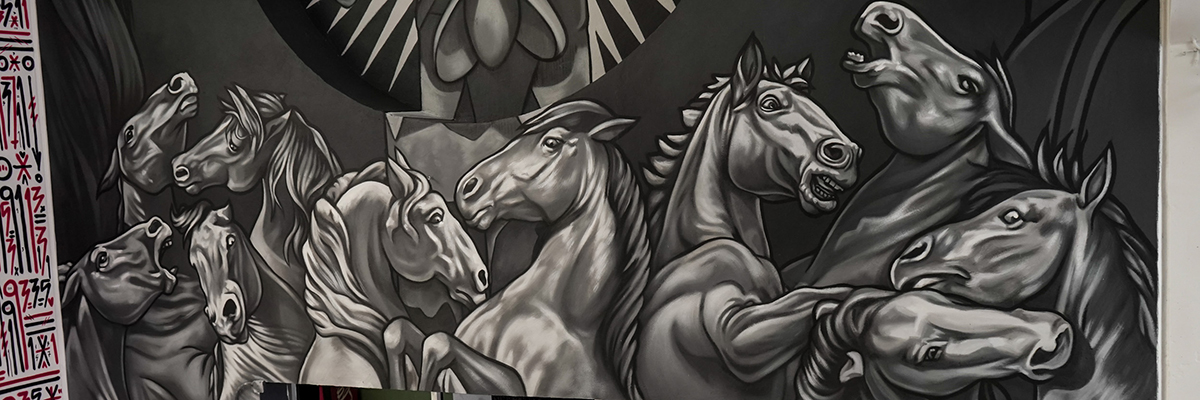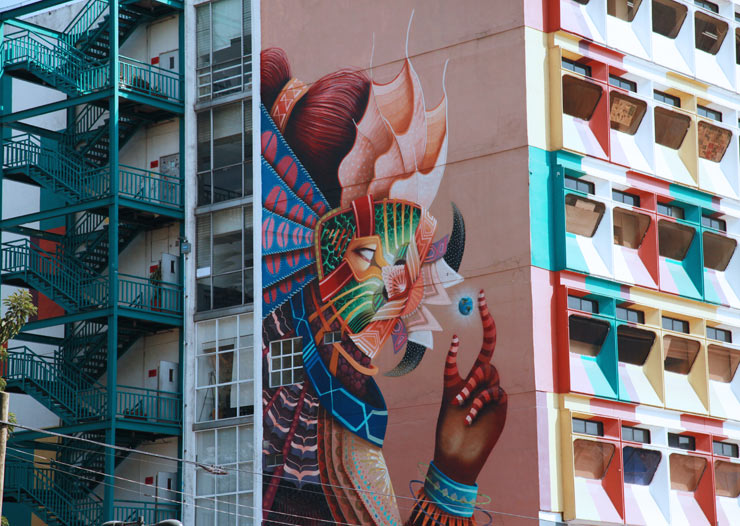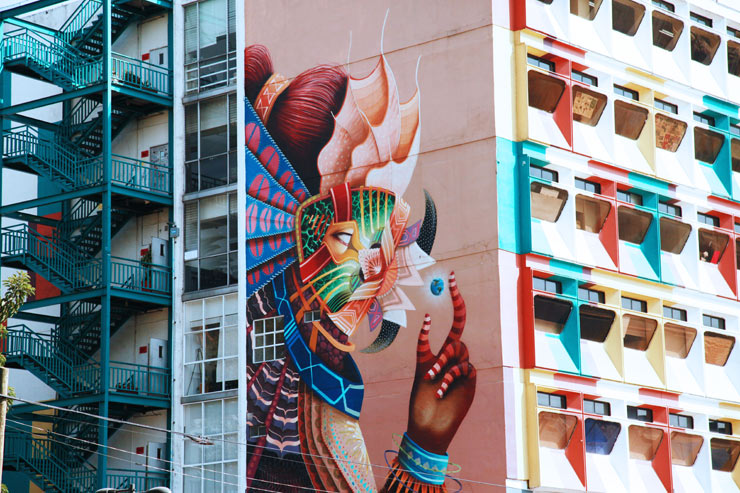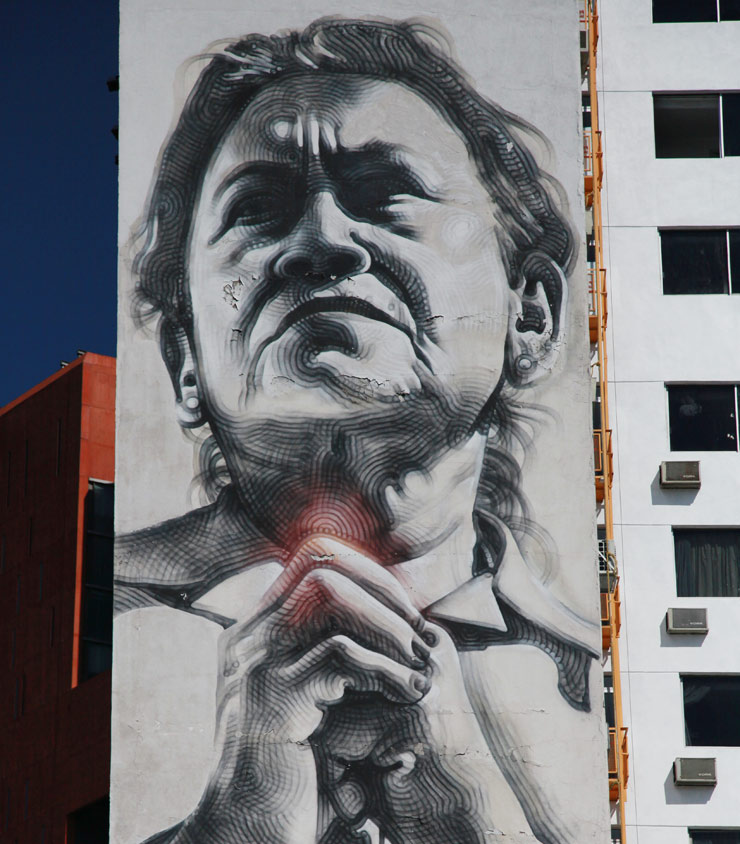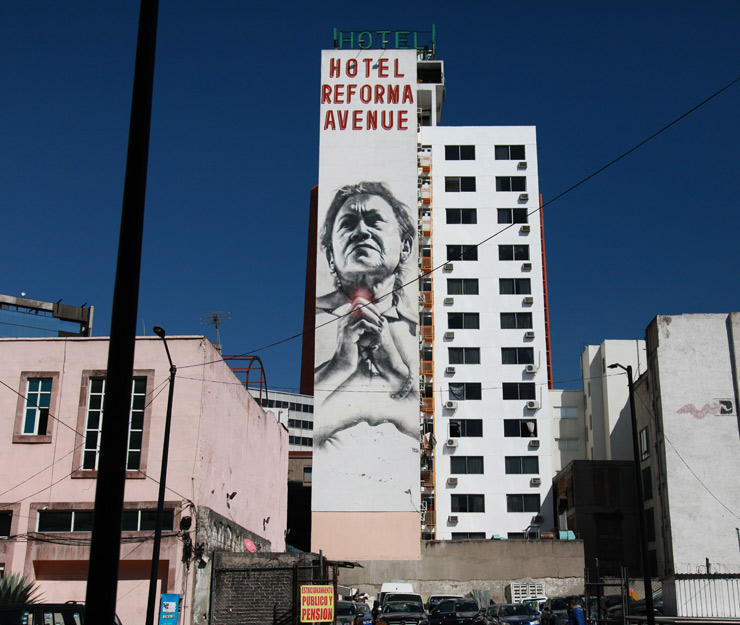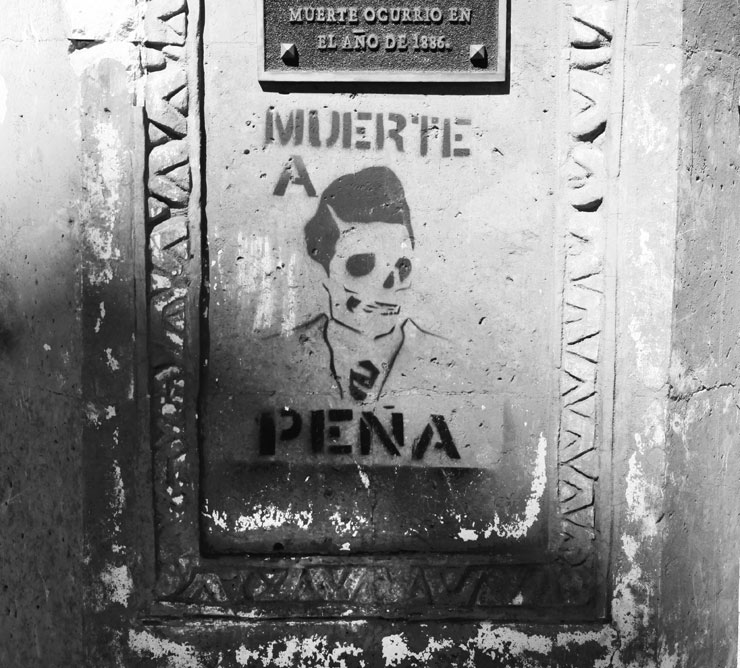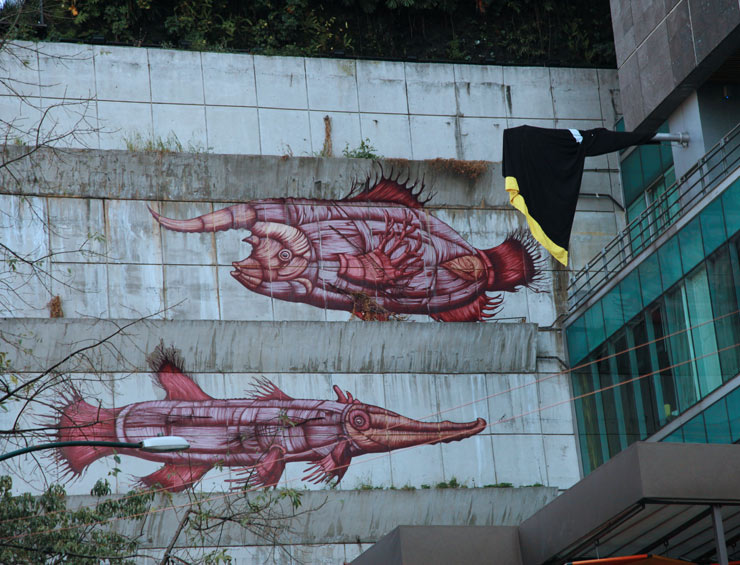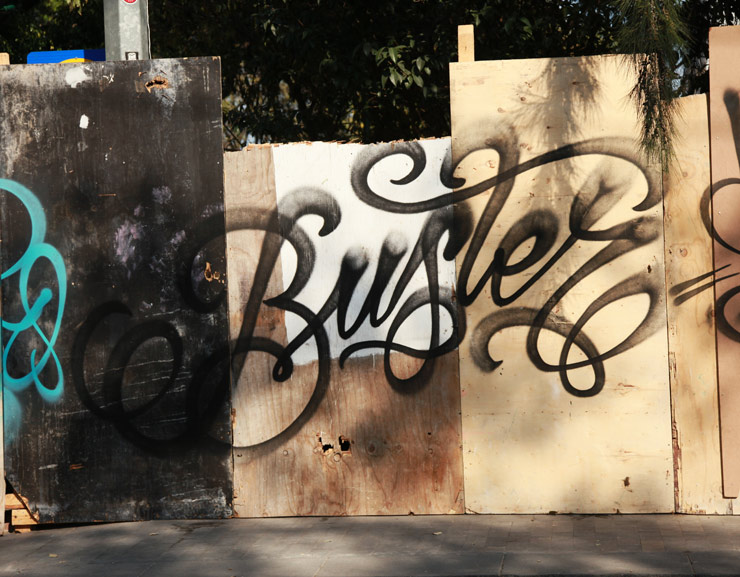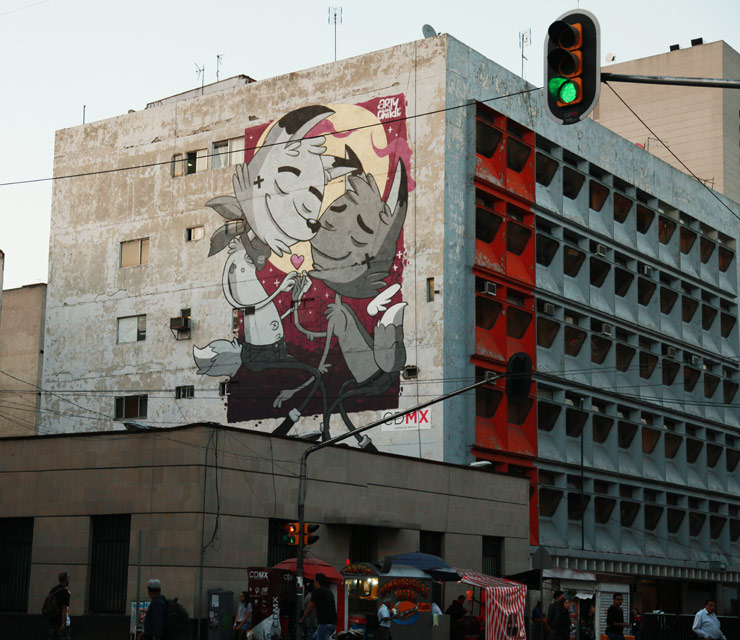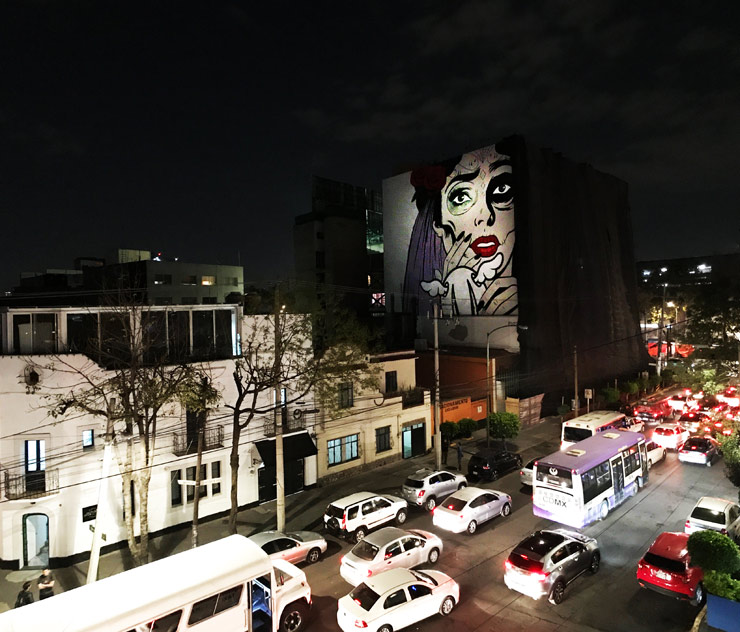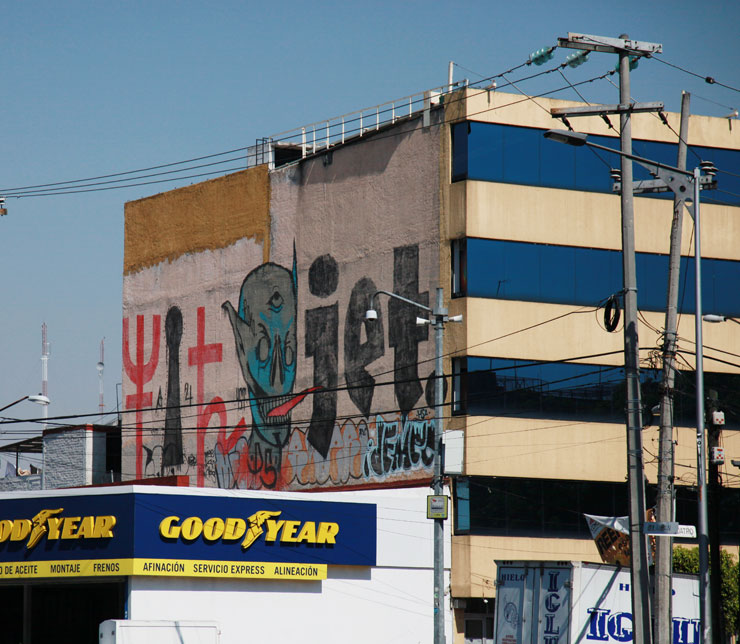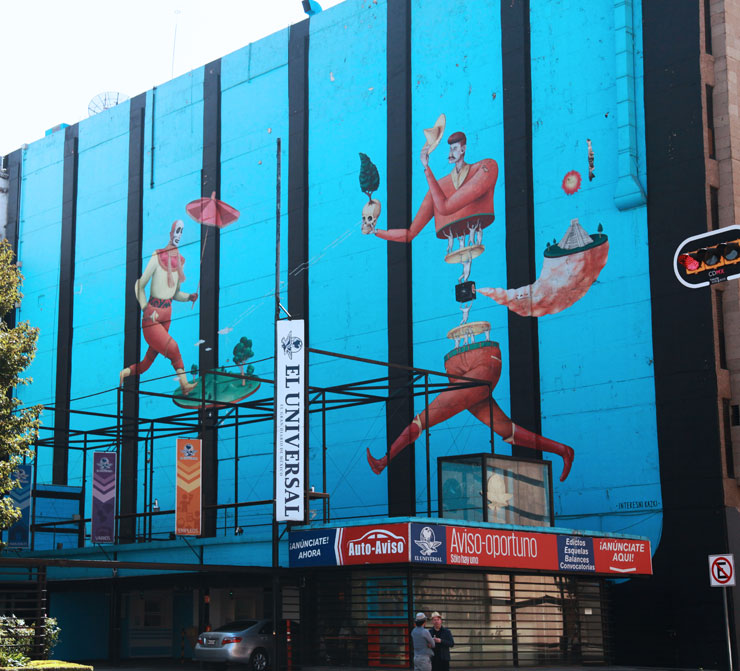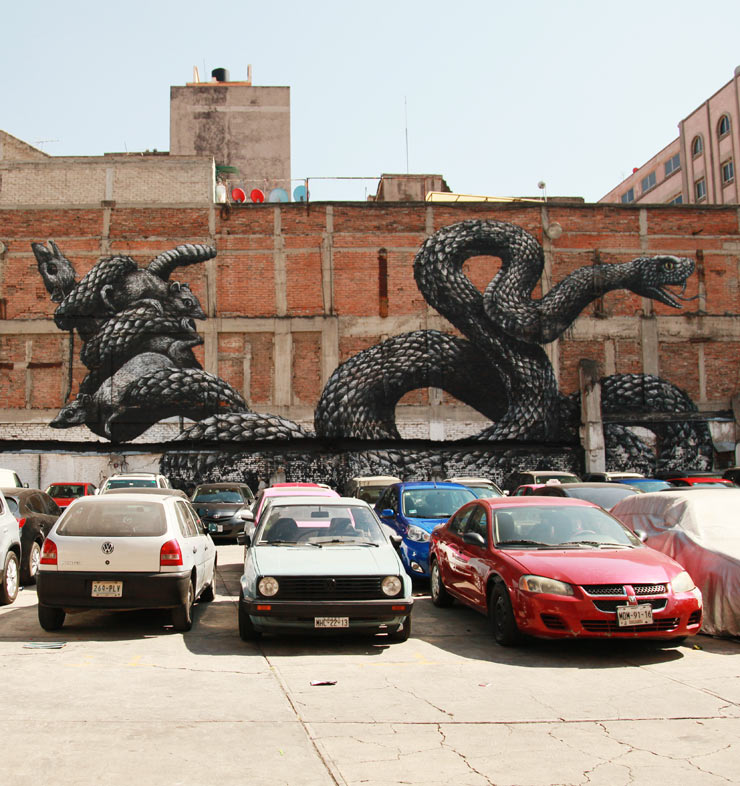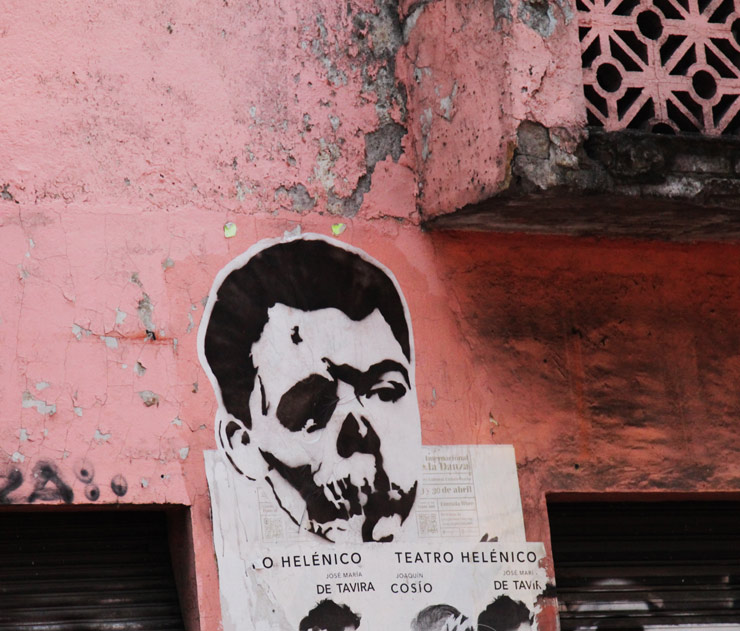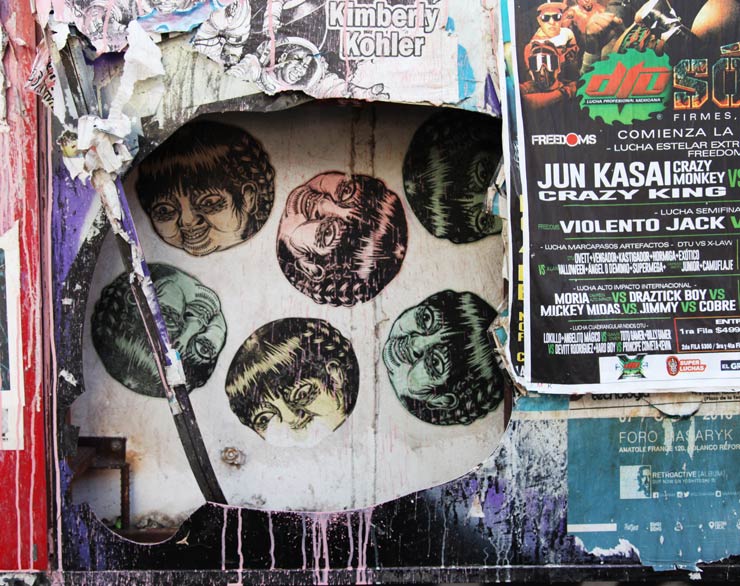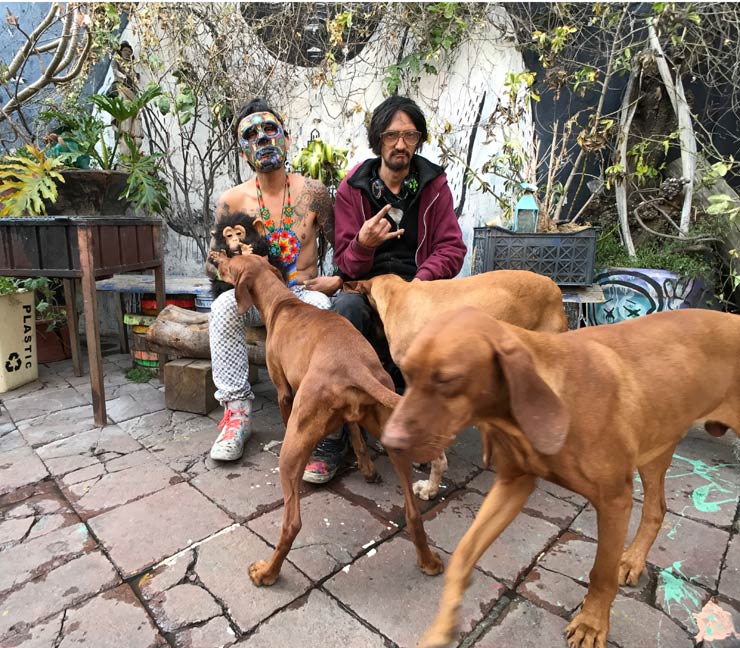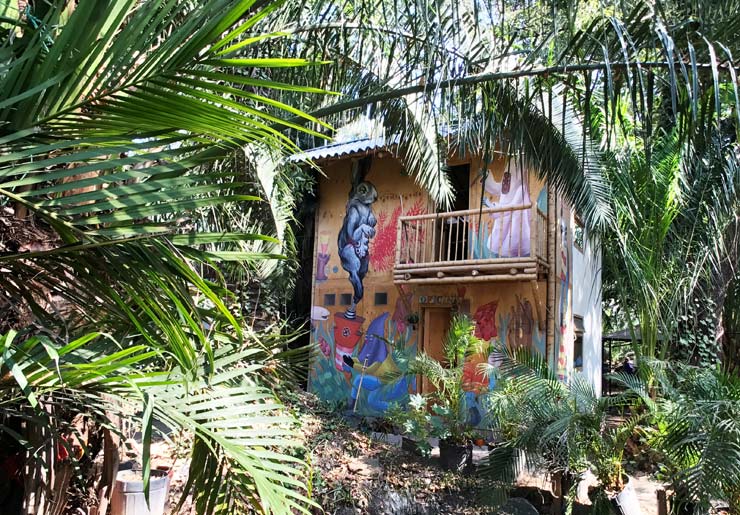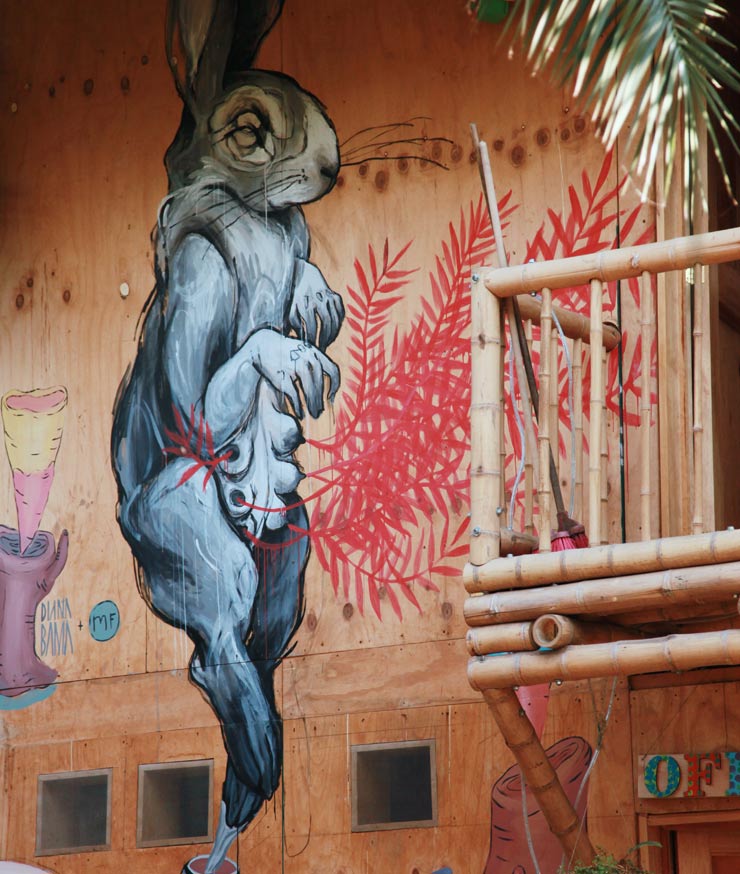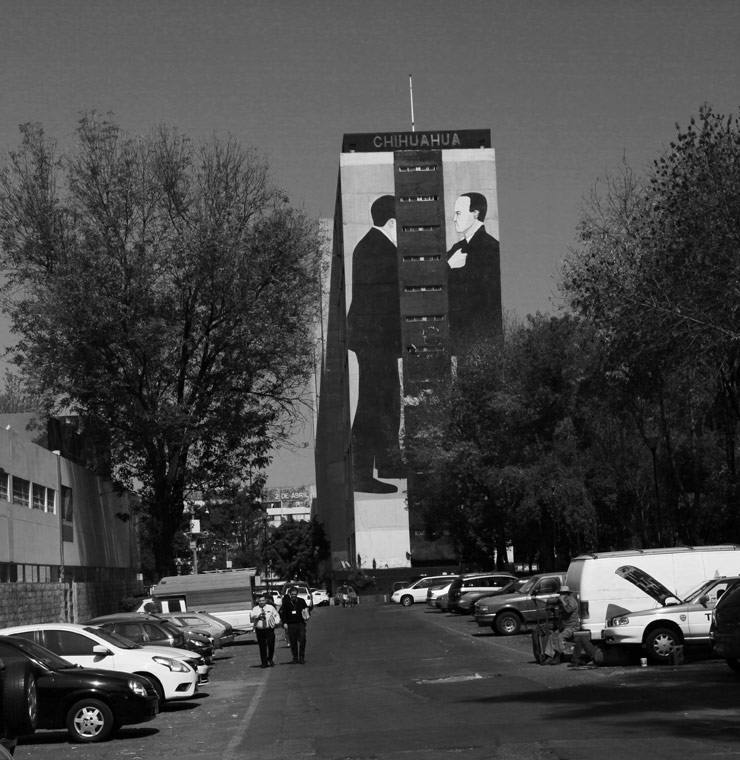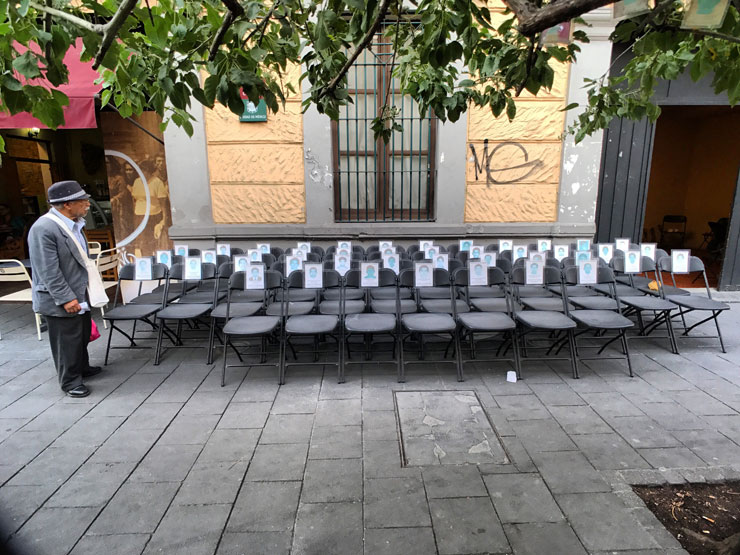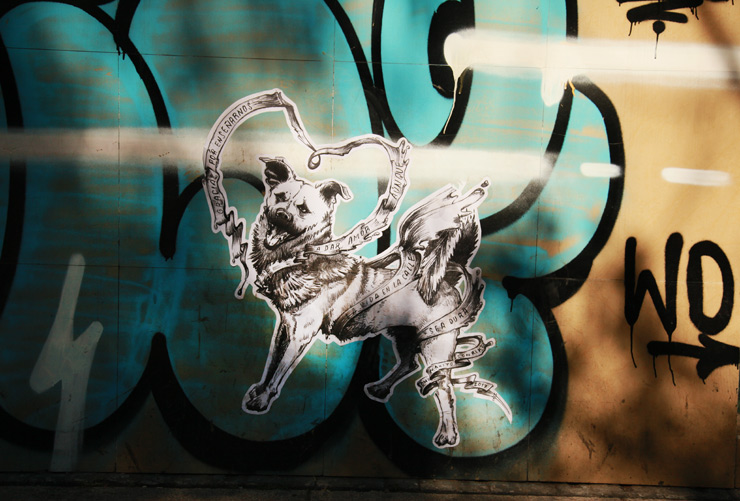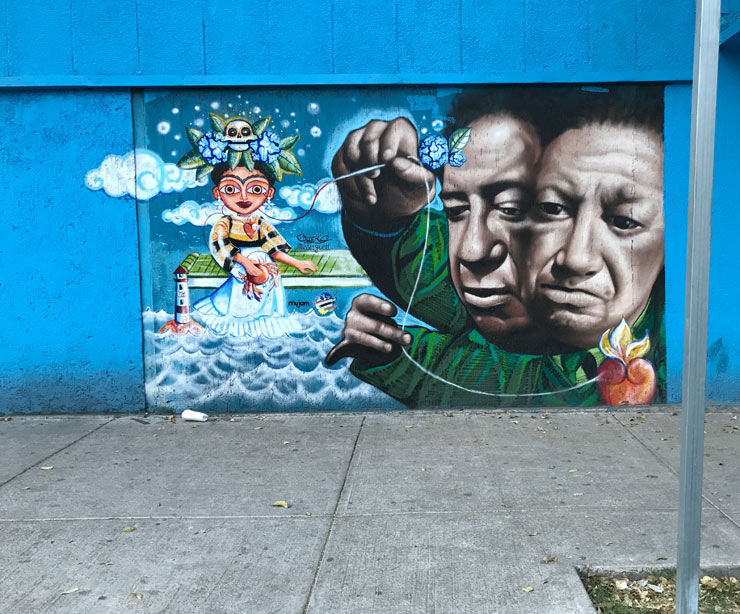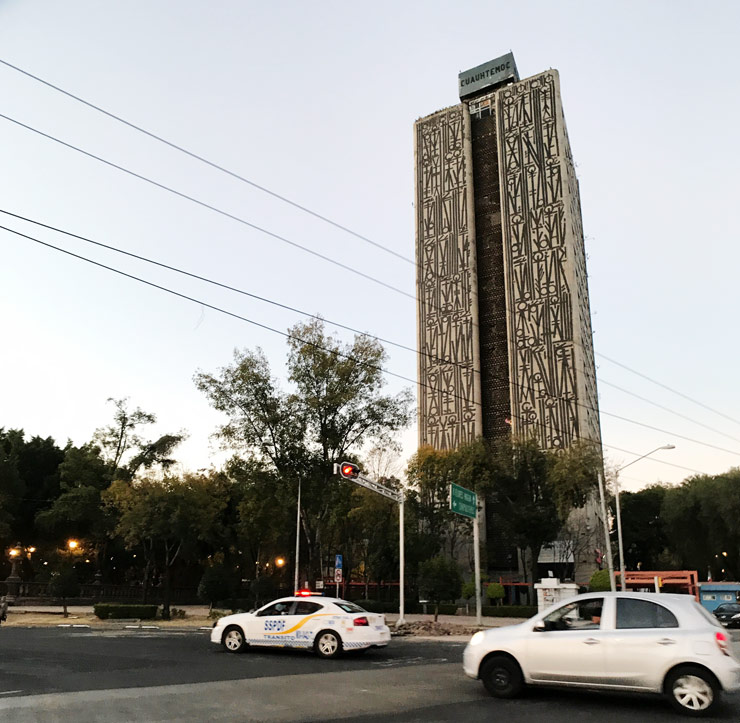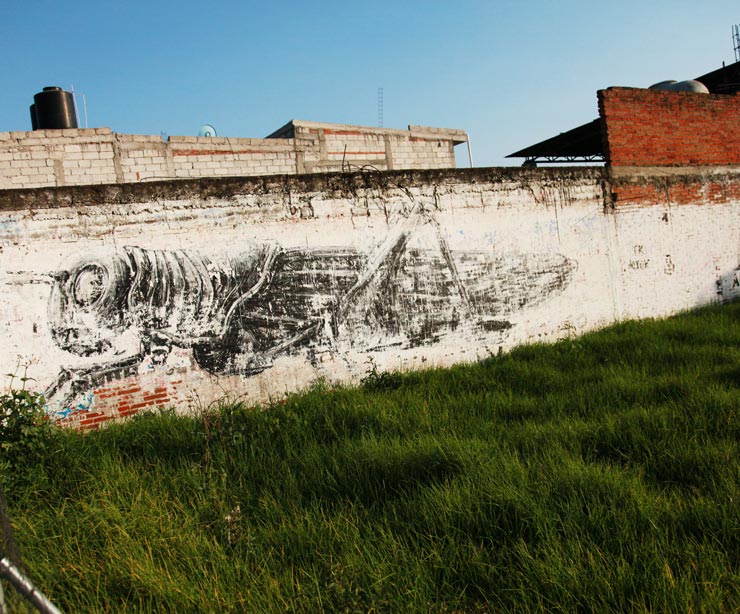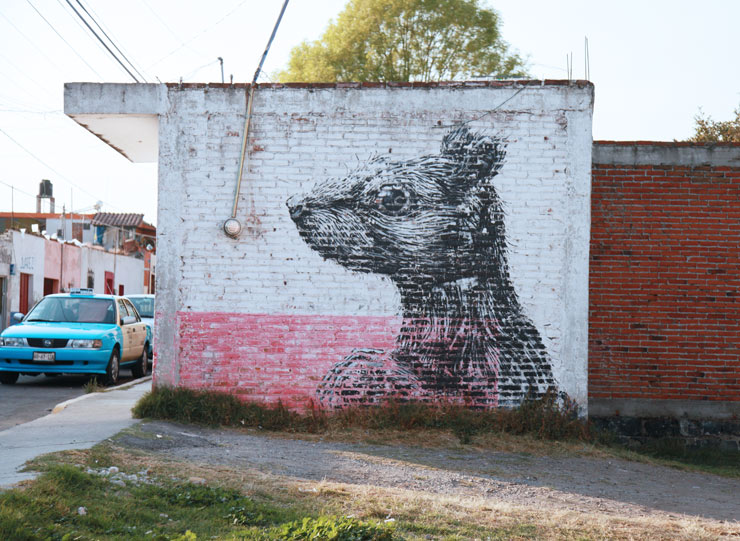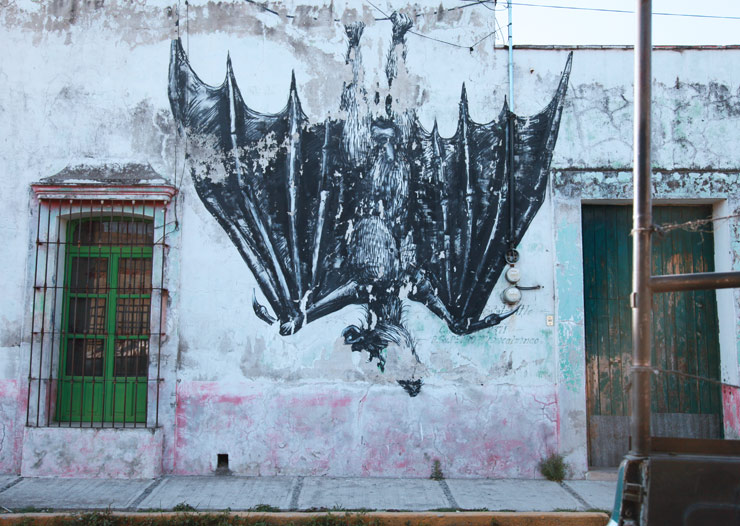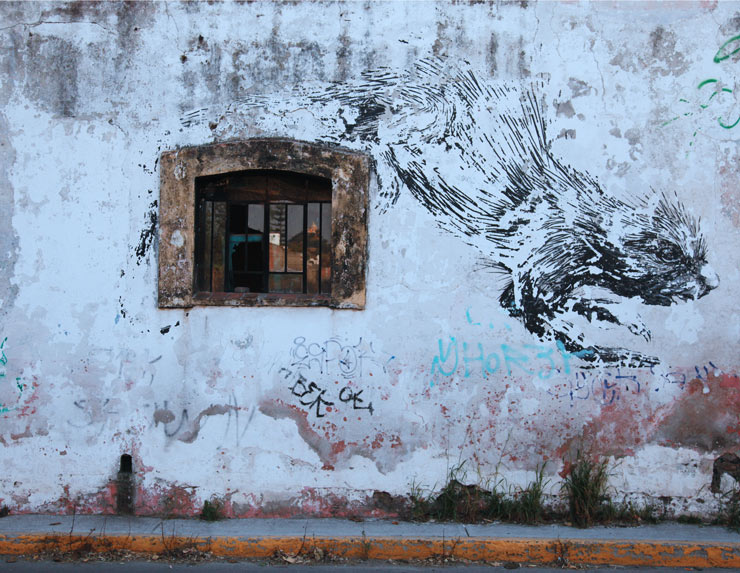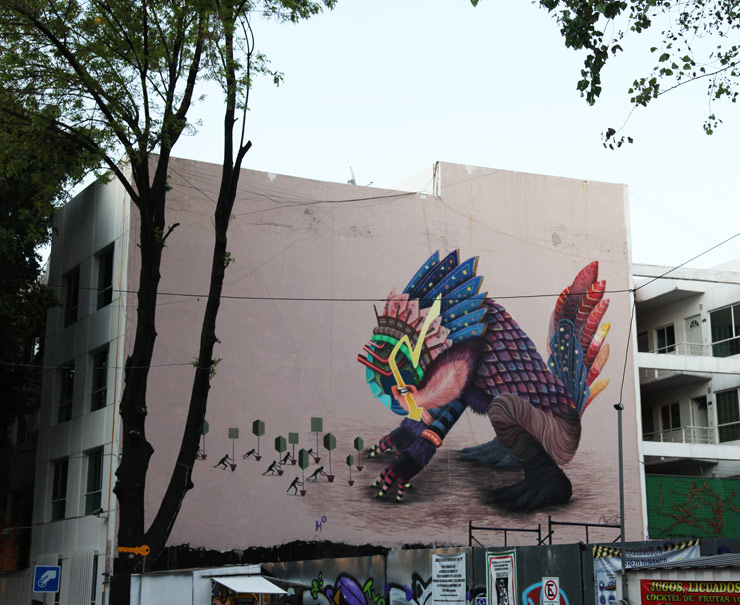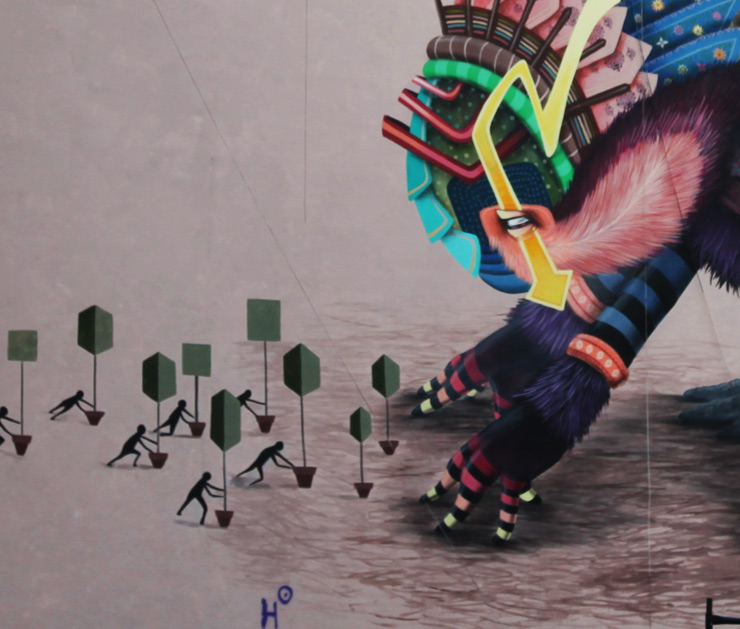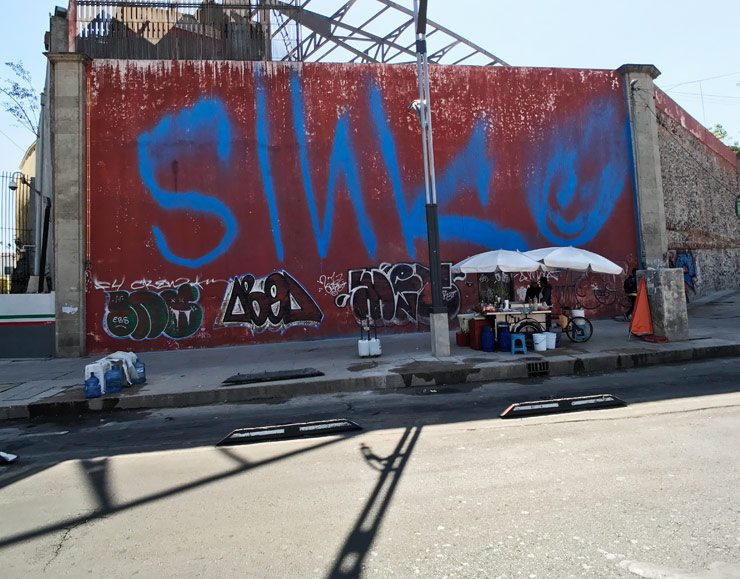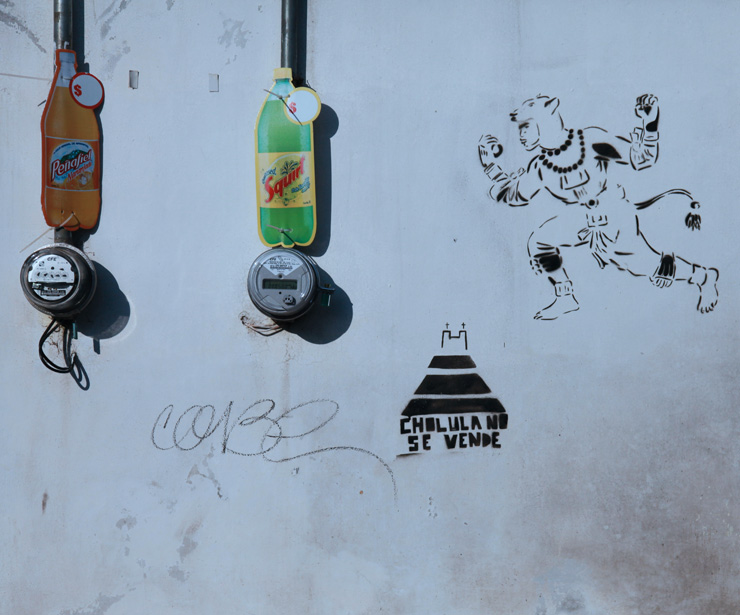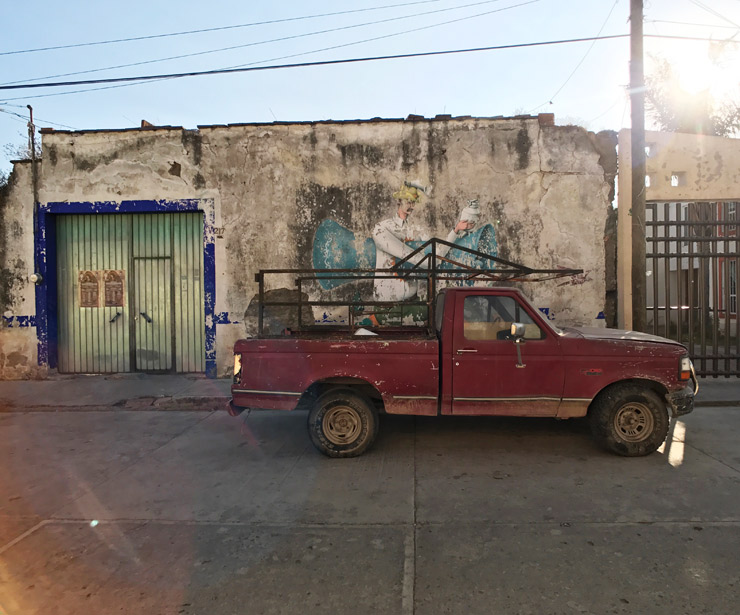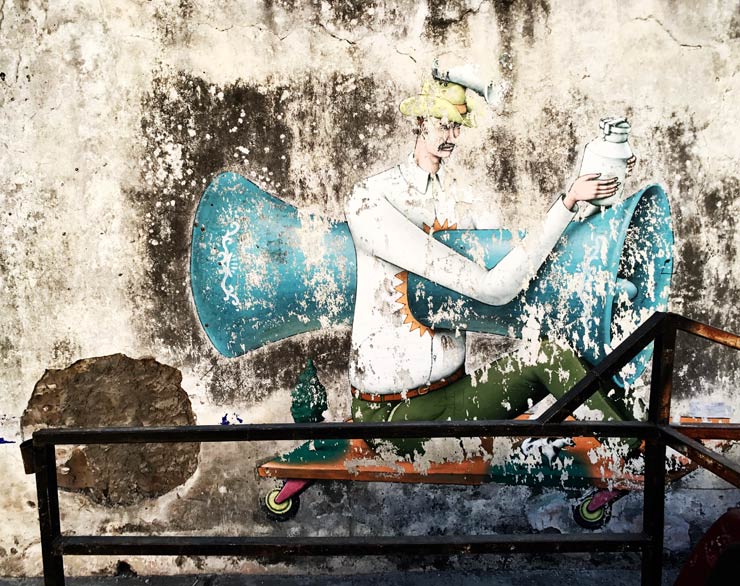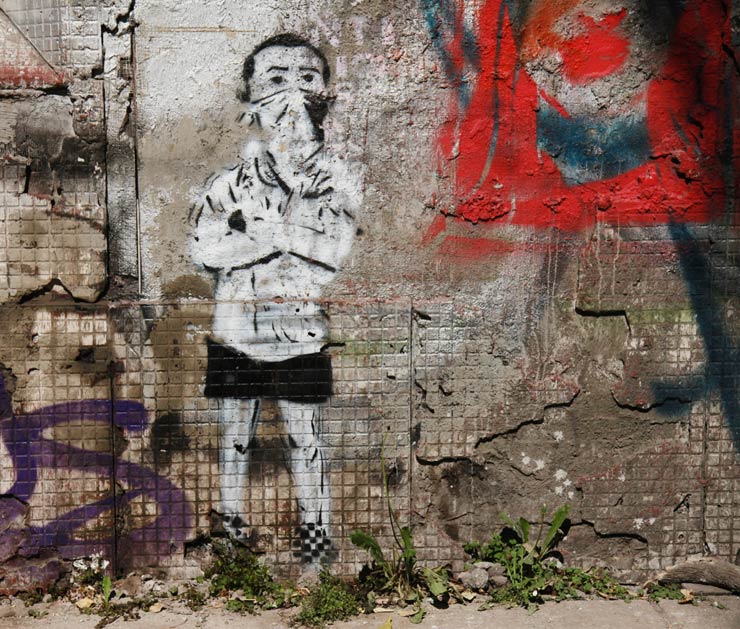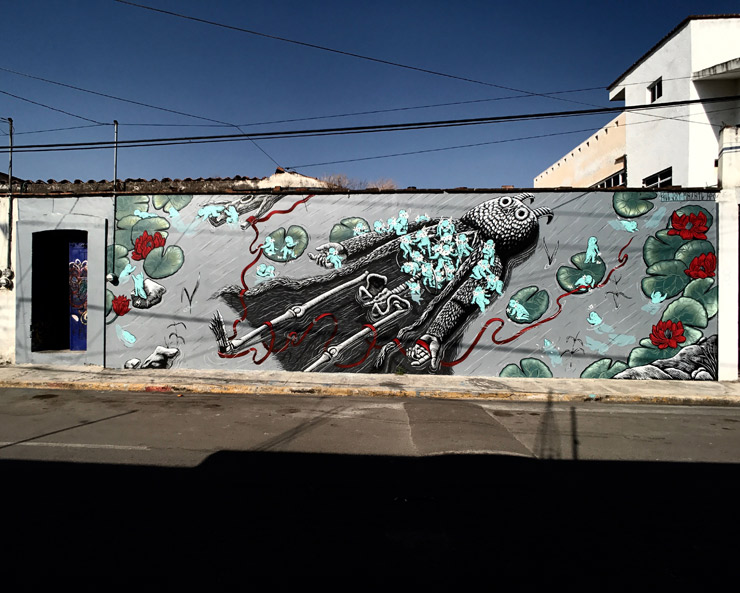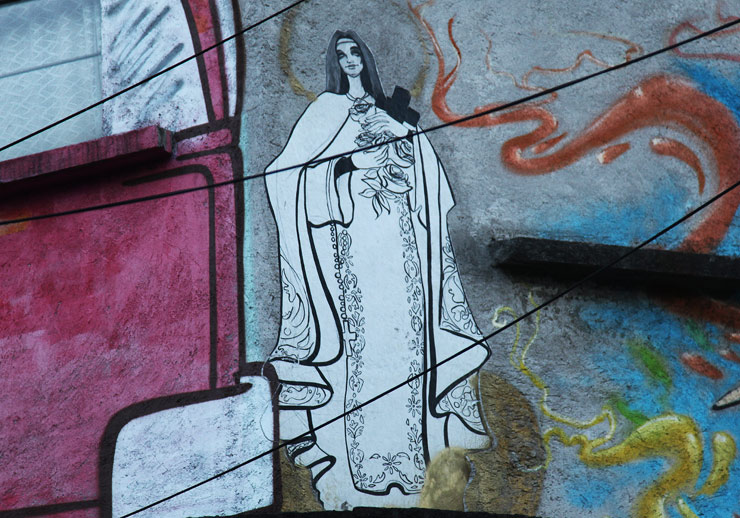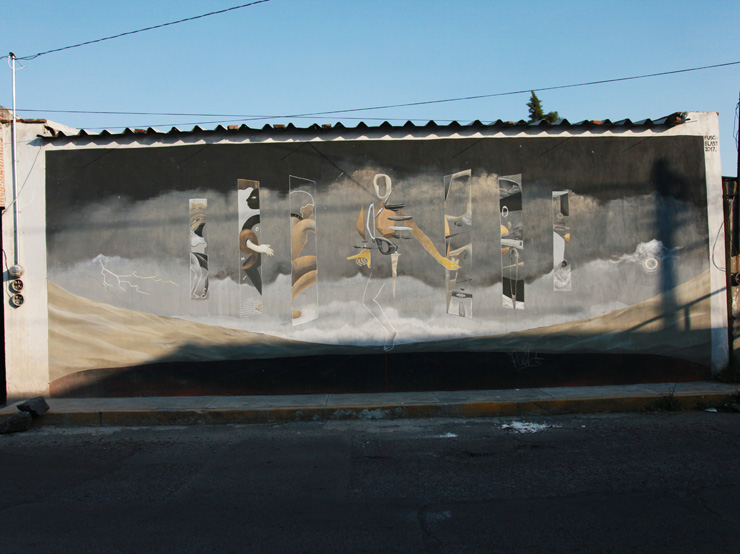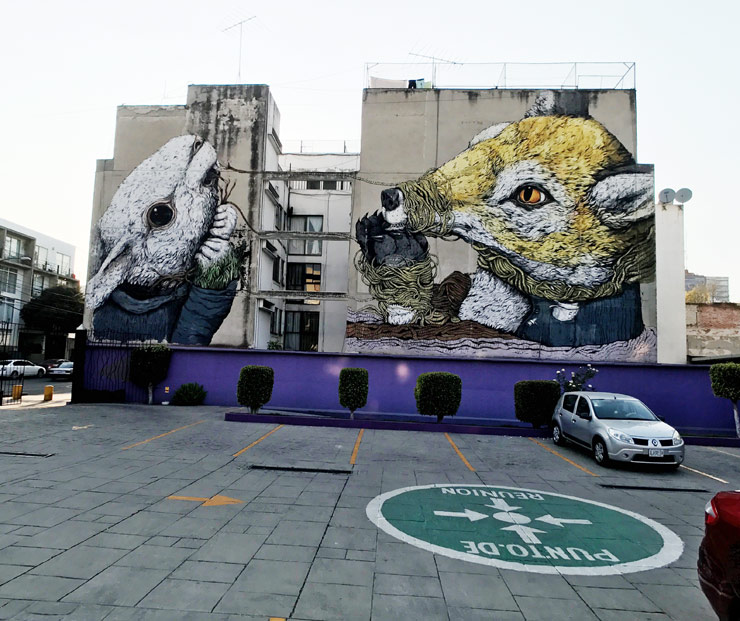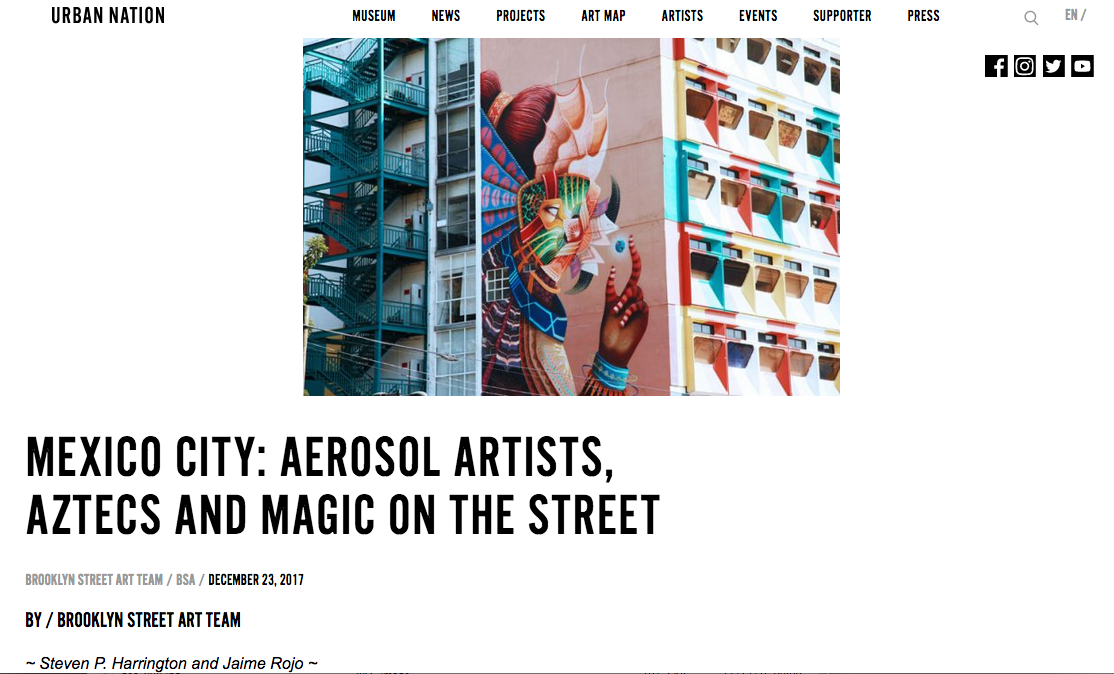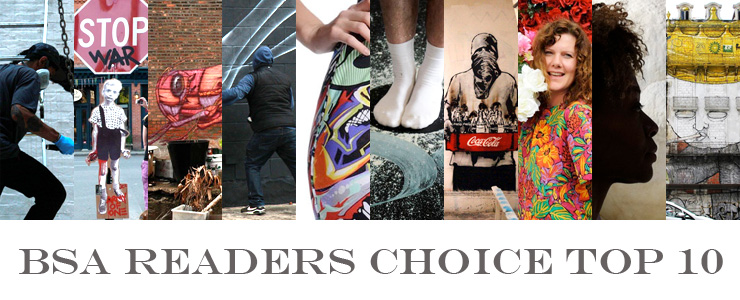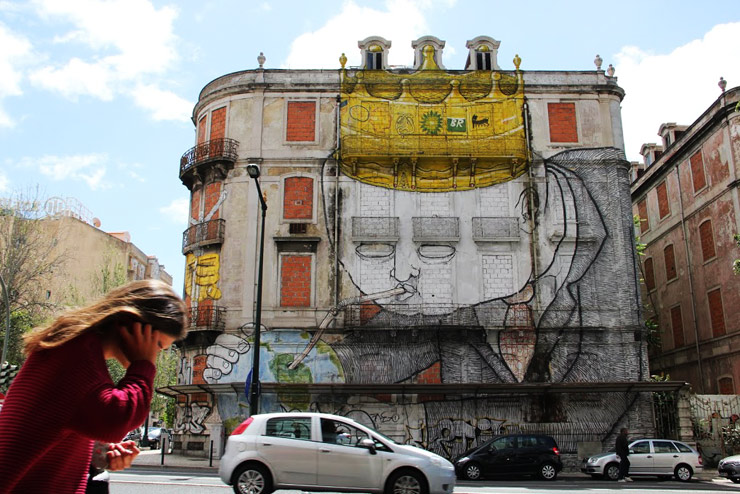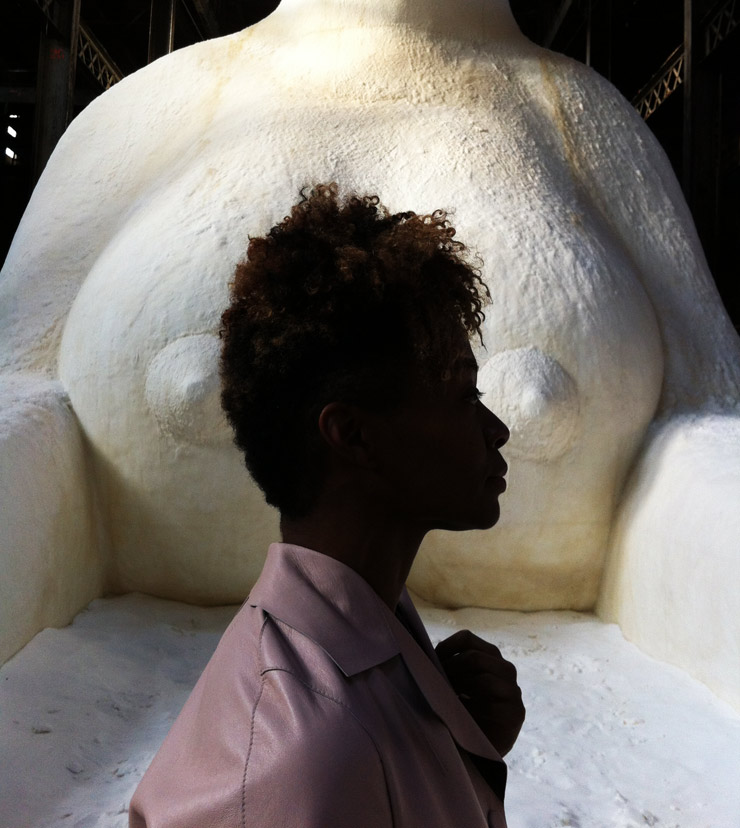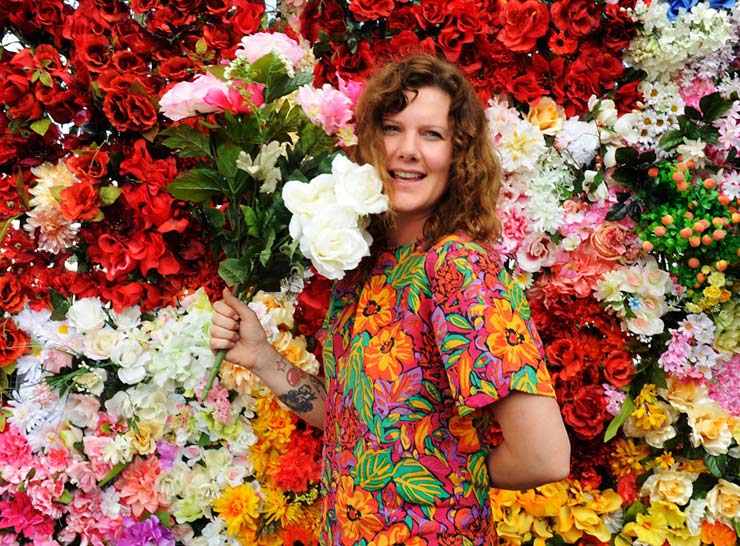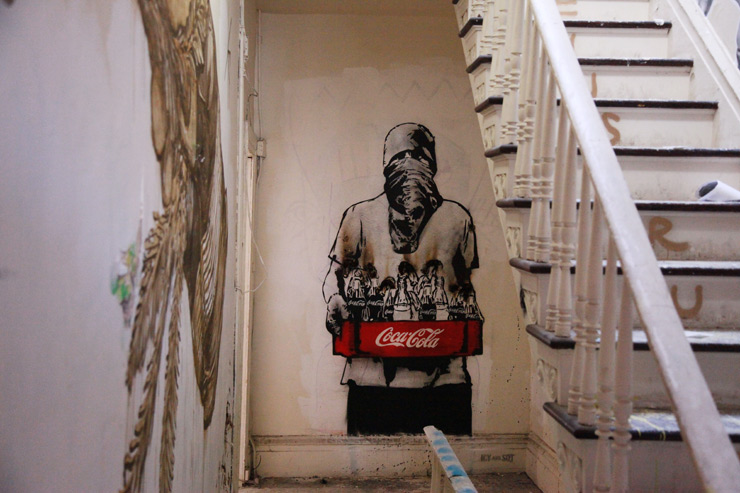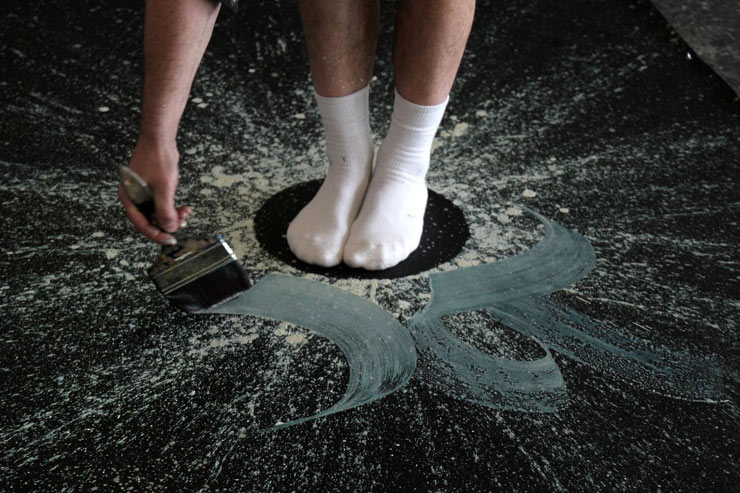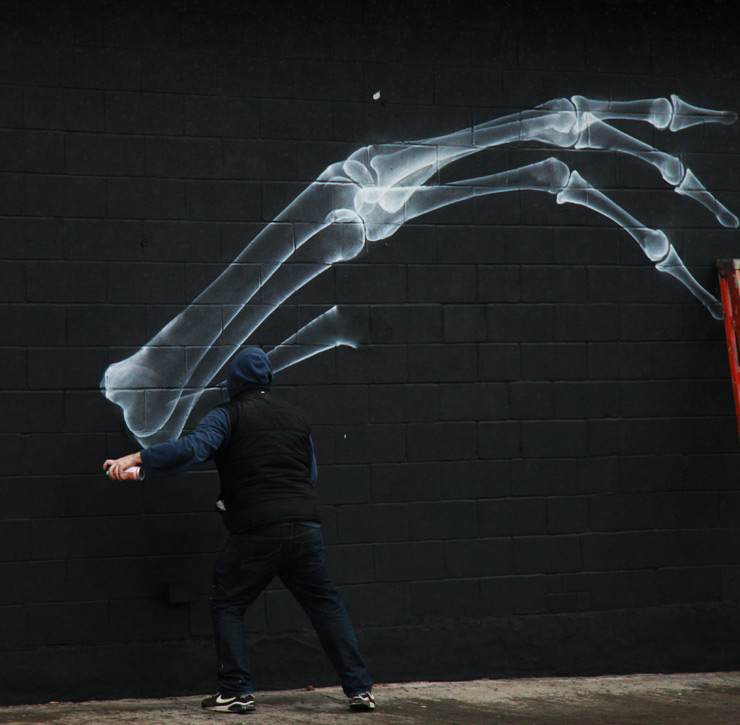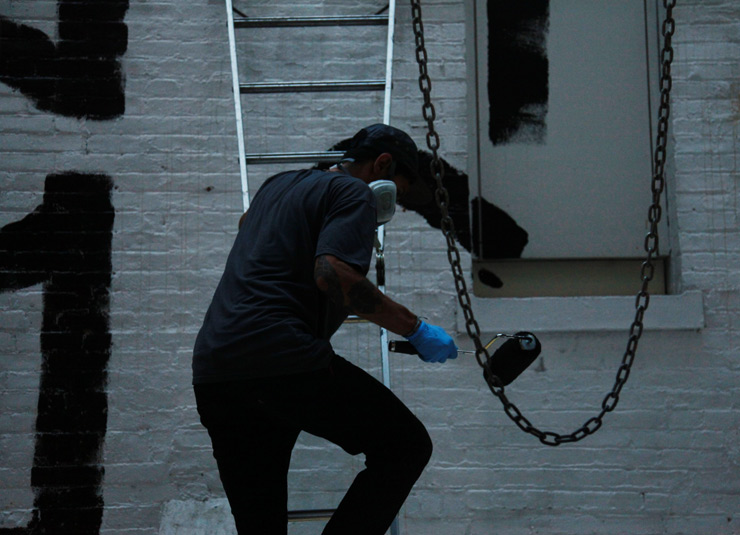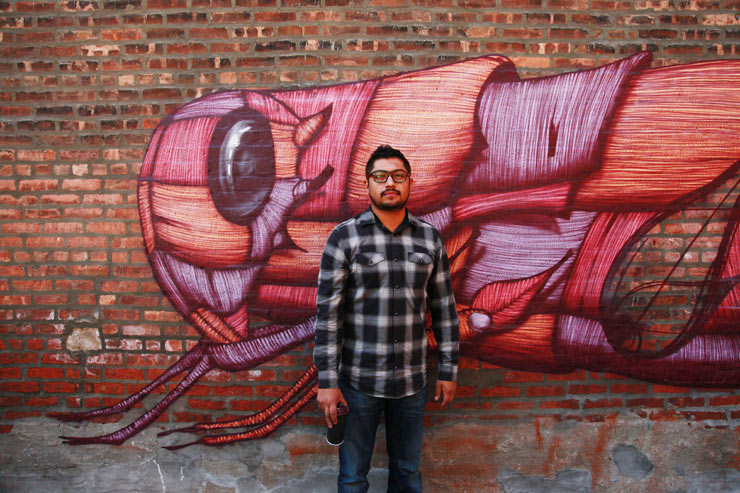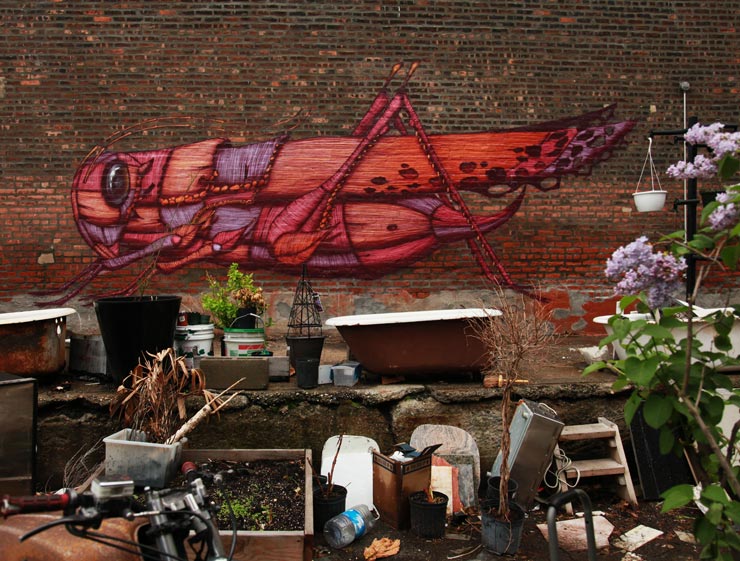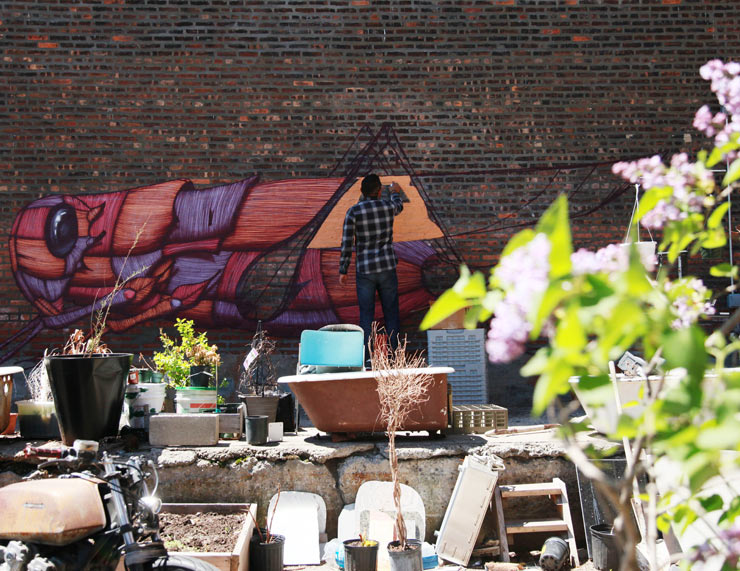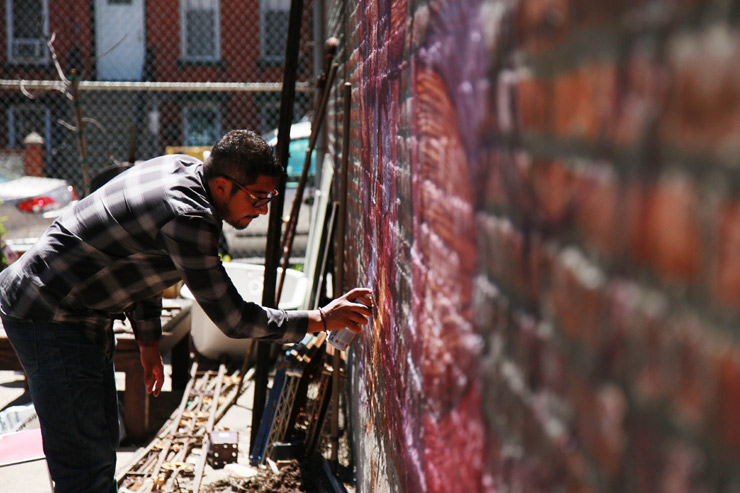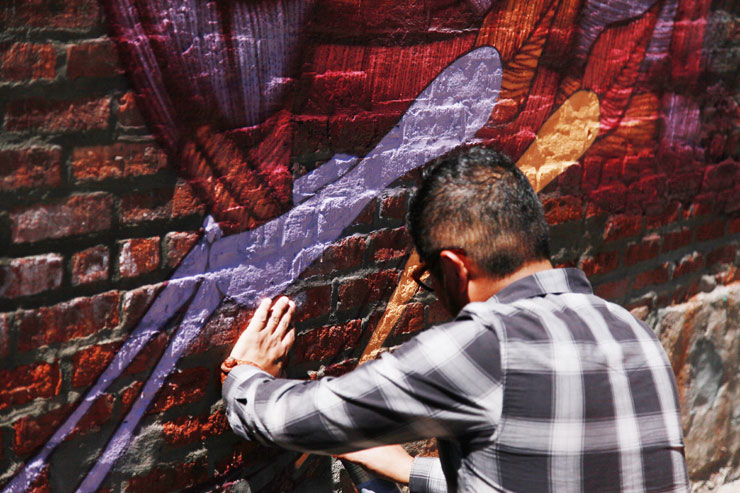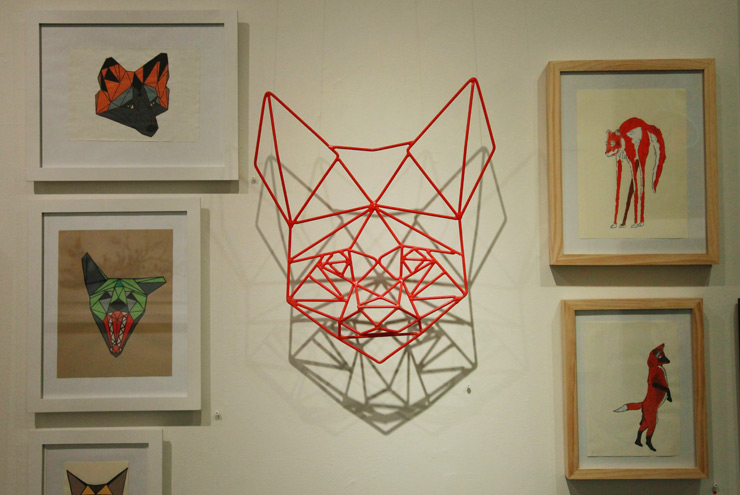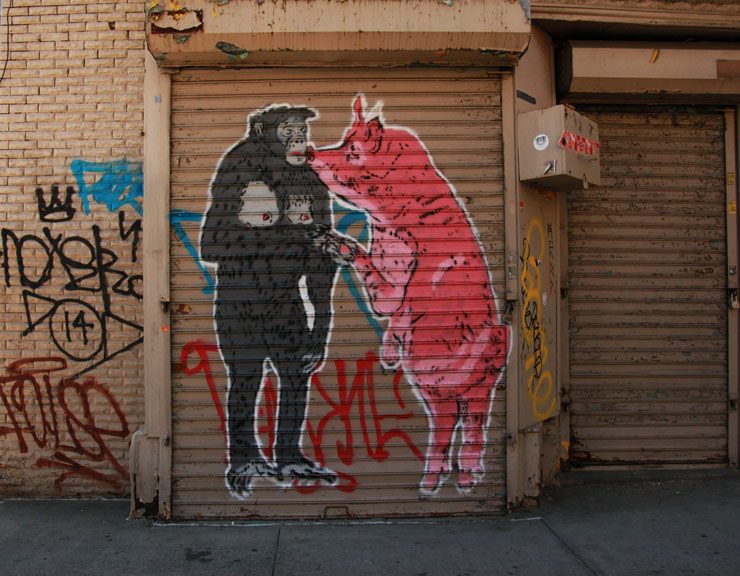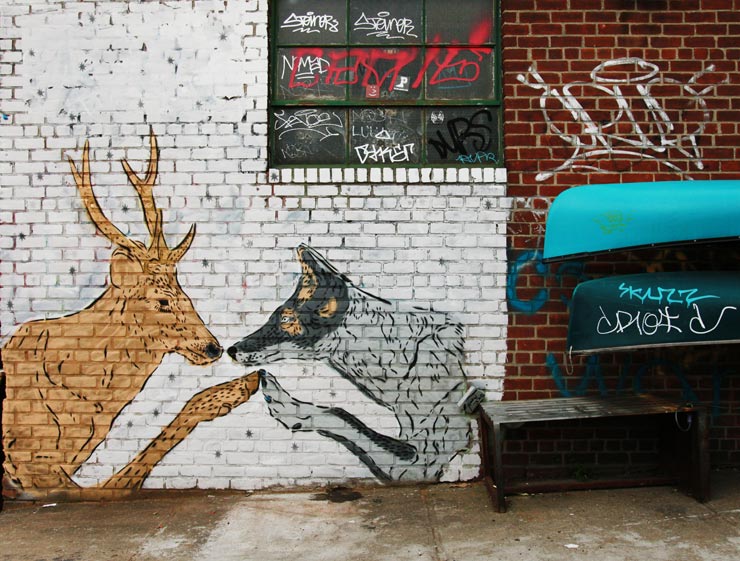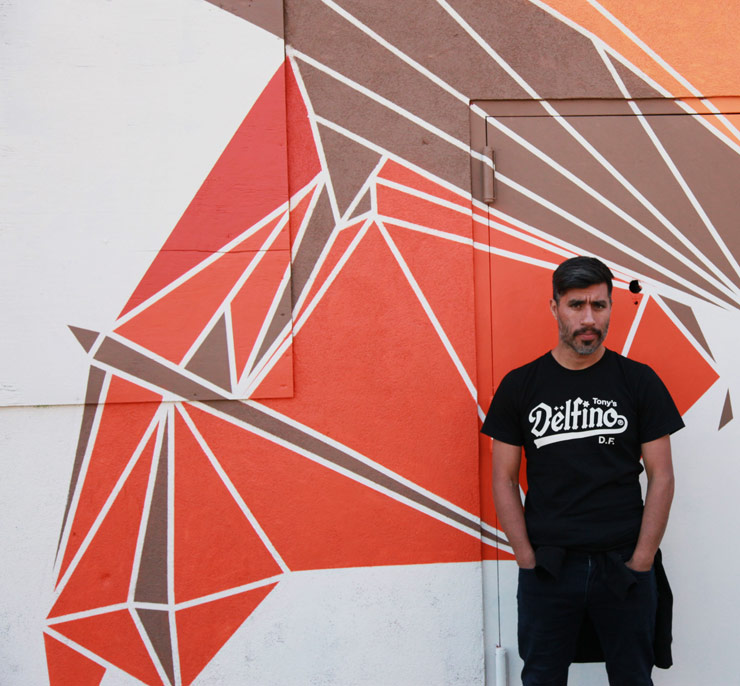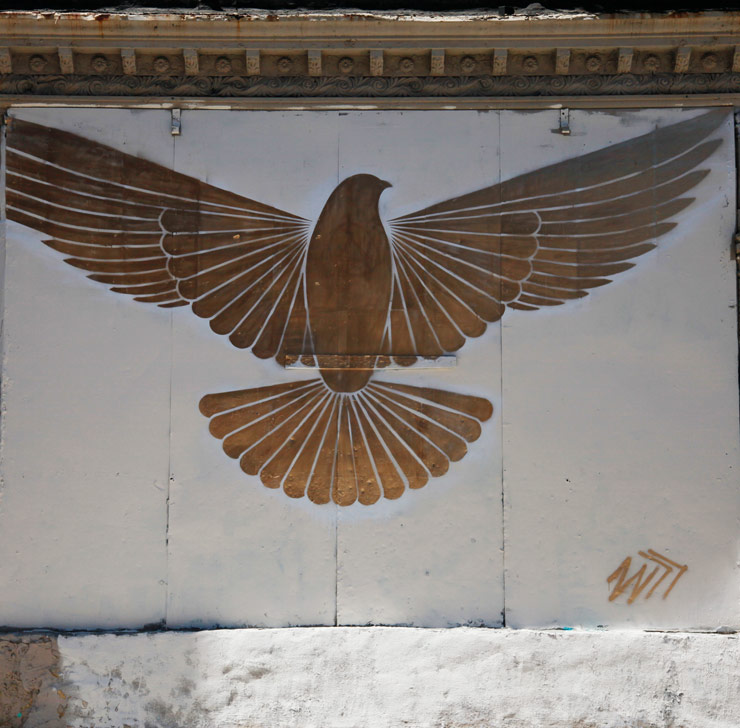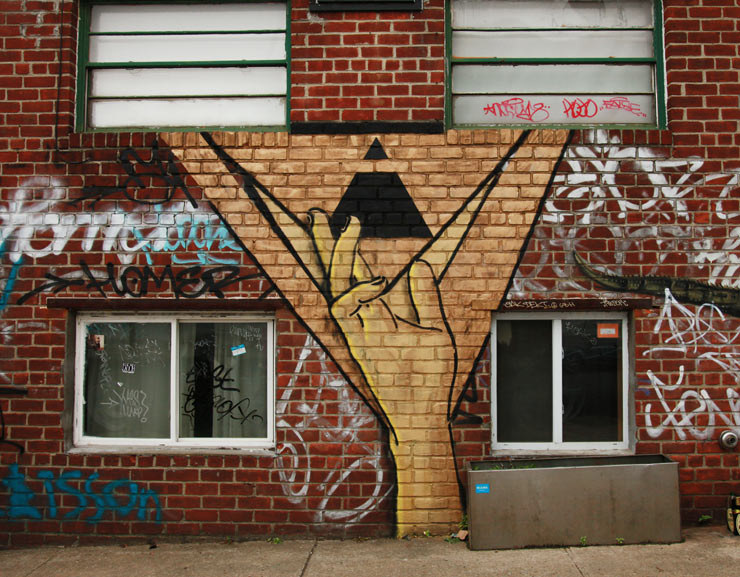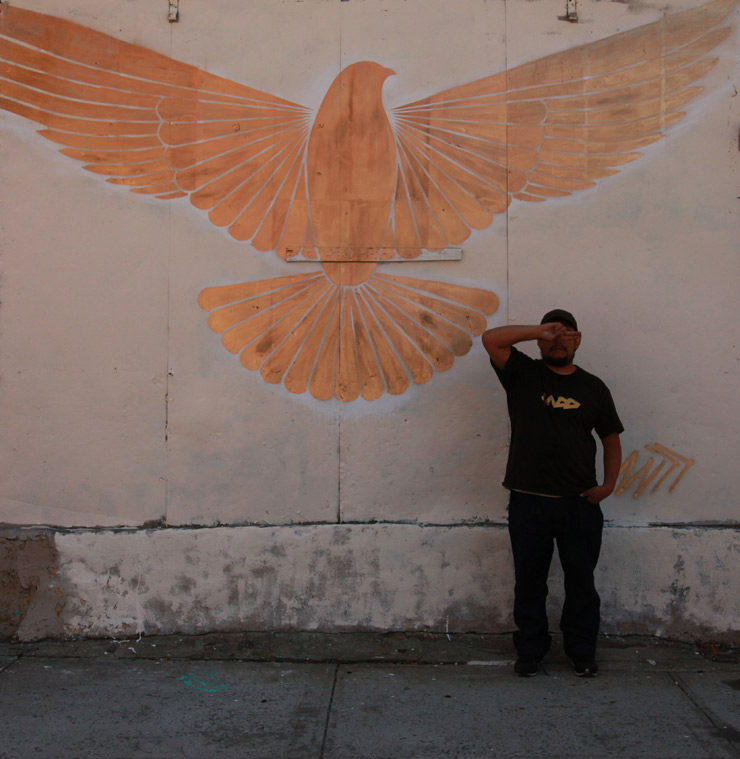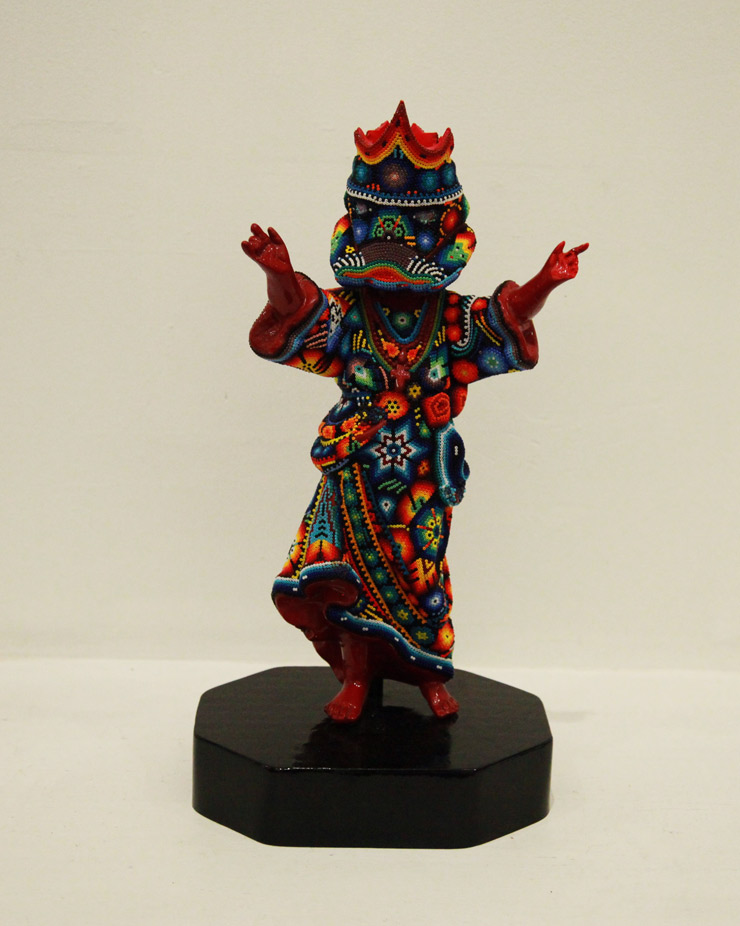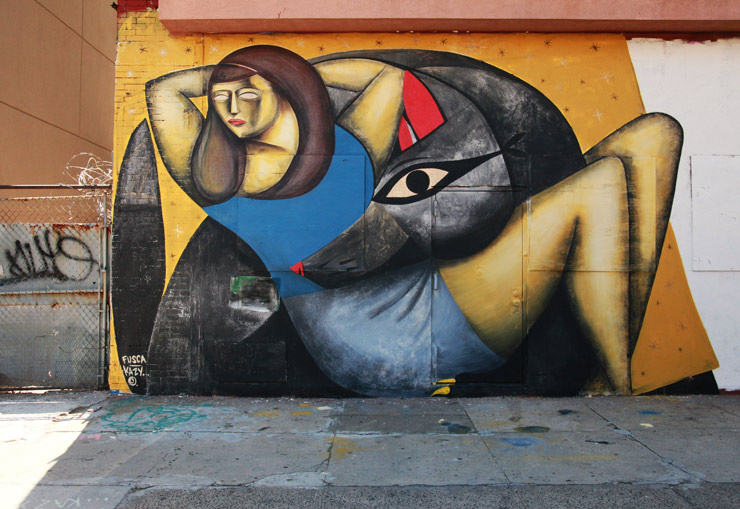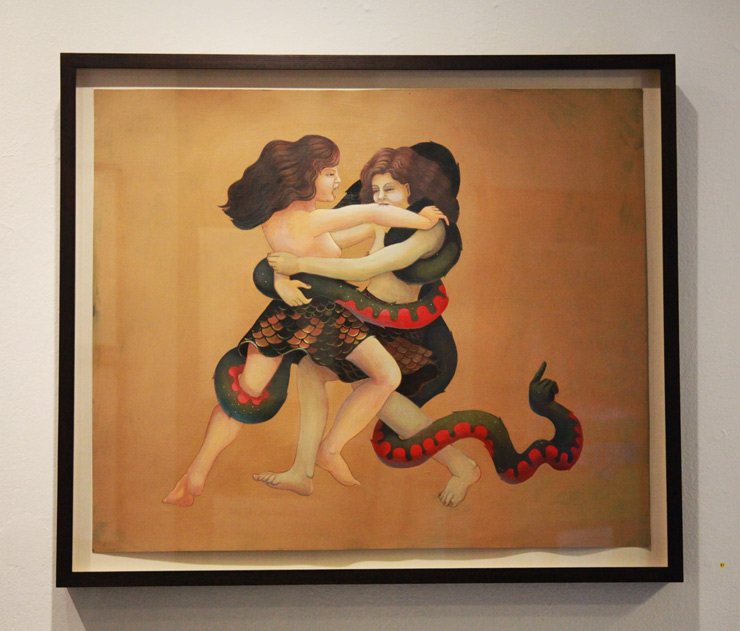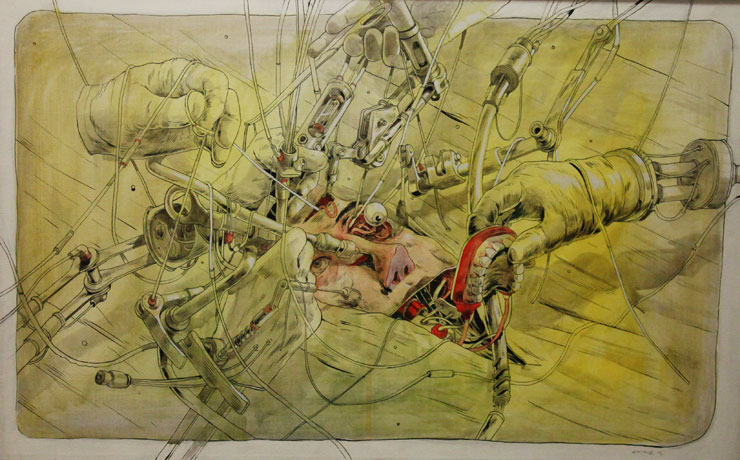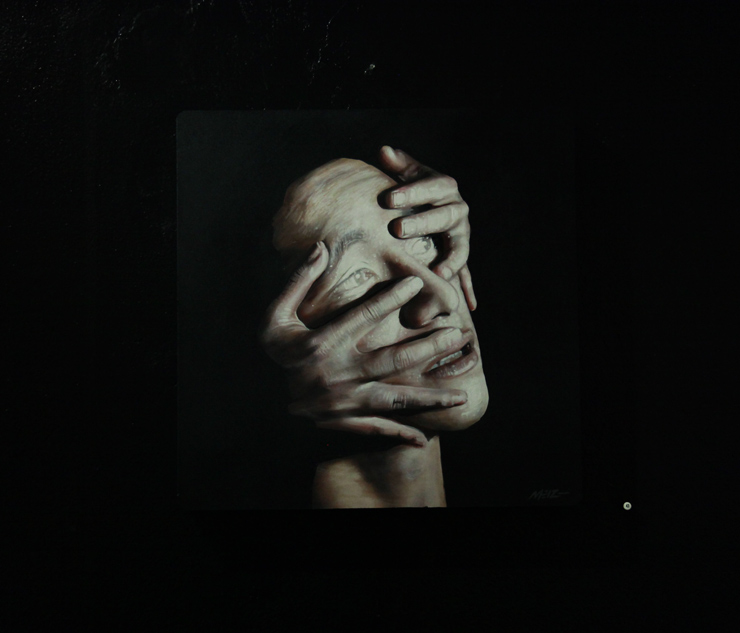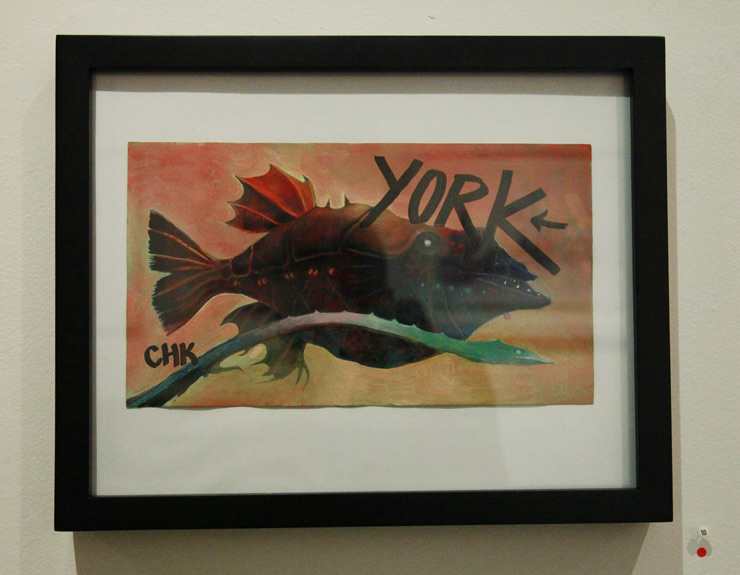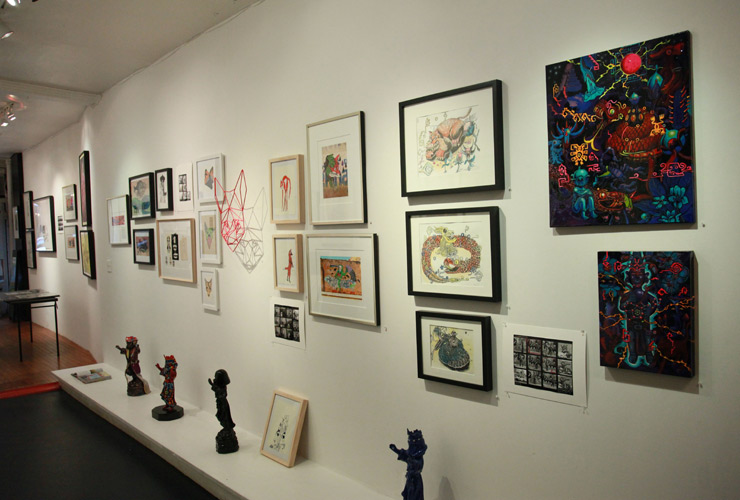Édgar Sánchez and Arcadi Poch may not simply be curators of the new initiative called Mexpania that merges the cultures of Mexico and Spain. They are social scientists, anthropologists, historians, and some may say, alchemists. With the inaugural installations of this auspicious project primarily created inside the entrance and with only 4 national/international artists, you may be curious how these foundational works will influence future curatorial choices for this ever-growing museum dedicated to urban art, or arte urbano.
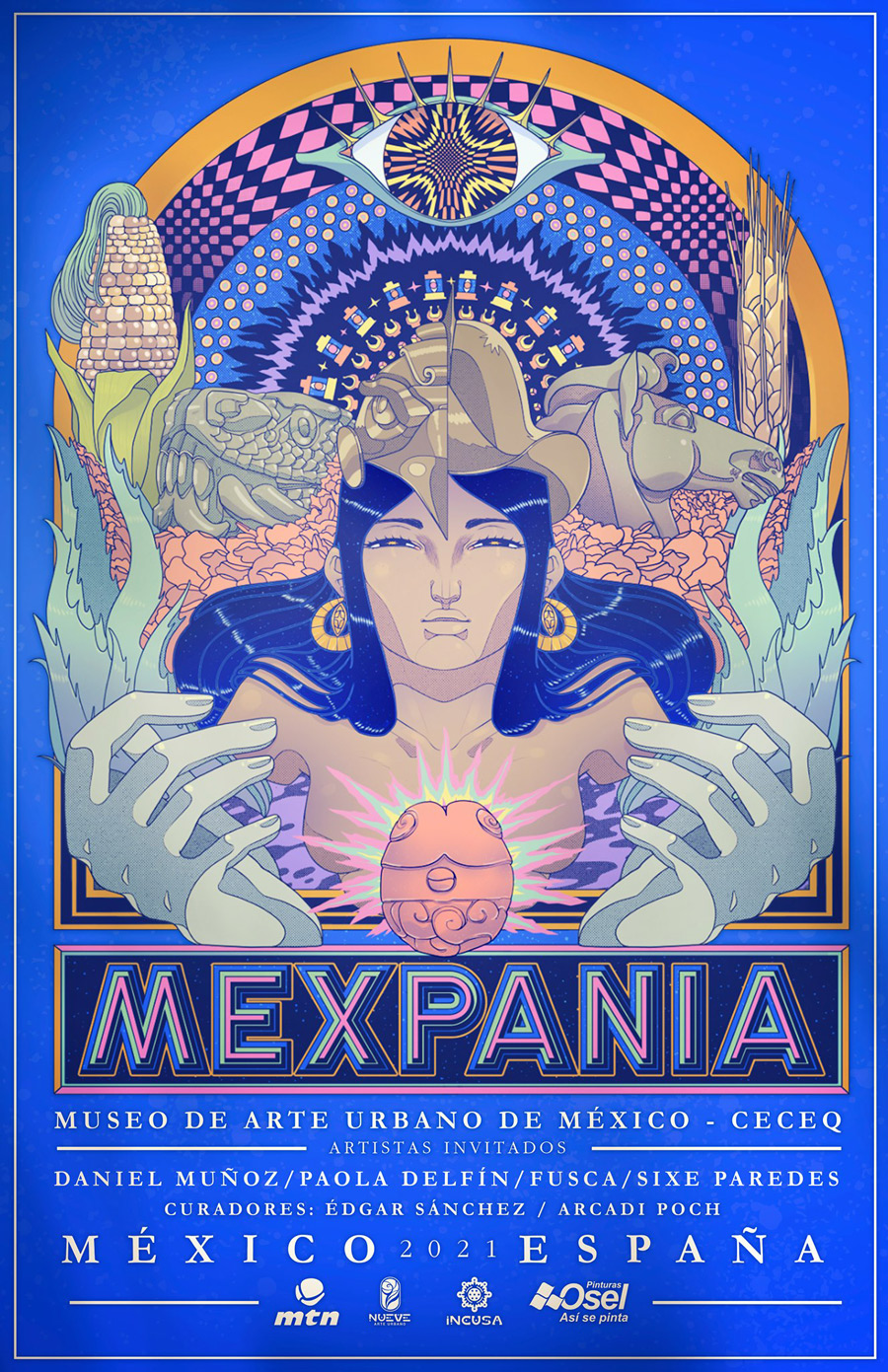
The Museo de Arte Urbano de México (MARUM) has been steadily and organically evolving these last ten years into a bonified attraction in the center of Querétaro thanks to the existing remarkable architecture and the driving force of the visionary Sánchez. Now with a partnership focused on the 500-year history of the Spanish migration to ancient Mexico, the opportunities to visually capture and illustrate the modern identity of a common culture must be daunting, but they have begun.
“We are the fruit of migration and miscegenation, of love and conflict that led to the mixing of our blood,” say the authors of Mexpania’s manifesto. “From that union was born an uncountable multitude of identities, ways of being, thinking, and believing.”
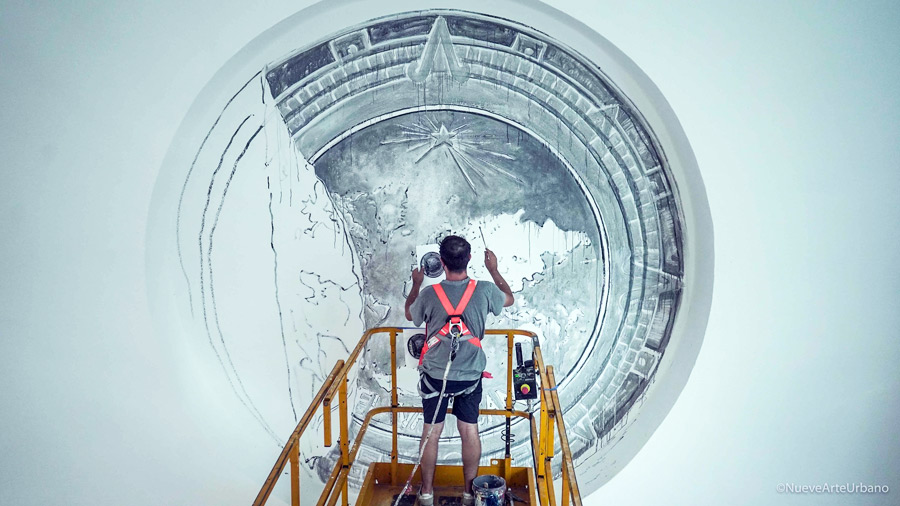
As an inaugural set of events and art-making, Mexpania presents what can only be considered an initial attempt to draw upon those themes and present an opening salvo. A calculated project to establish this entrance to the formalized museum, one that proposes to document and celebrate the movement of monumental art through streets and cities. The selections are a deliberate mixture of styles, histories, and identities that confront our ability to parse differences and similarities and emerge with one unique voice.
“The feeling is like entering a contemporary temple, which transports you to a sacred place dedicated to the mestizo and migrant nature of humanity,” say the two curators of the freshly combined works on the MARUM campus, as they call it. “It has not been an easy task to generate what we understand as a single piece by making such different artistic languages coexist and getting them to dialogue in harmony.” Just reviewing the 33 muralists on the exterior spaces of the campus gives one an opportunity to consider the richness of this locally grown, now globally expanded, multi-voiced culture.
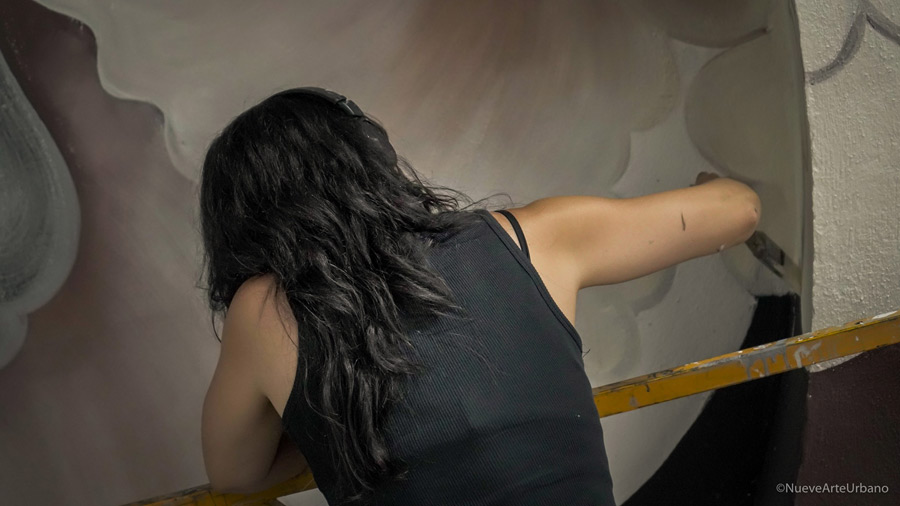
BSA is proud to be the first to present the new works in their new home and to welcome readers to regard these fresh murals in context inside an institution dedicated to urban art now rooting into the soil of one of the original forbears of the modern mural movement a century ago, Mexico. In a city visited on the streets by modern street art internationalists like ROA, Stinkfish, Jaz, Elian, Sens, Sego, Alexis Dias, Entes, Enter, Ever Siempre, and others – this too is the land that gave birth to the great muralists Diego Rivera, José Clemente Orozco, David Alfaro Siqueiros, Rufino Tamayo, Aurora Reyes Flores, Elena Huerta Muzquiz, and Rina Lazo.
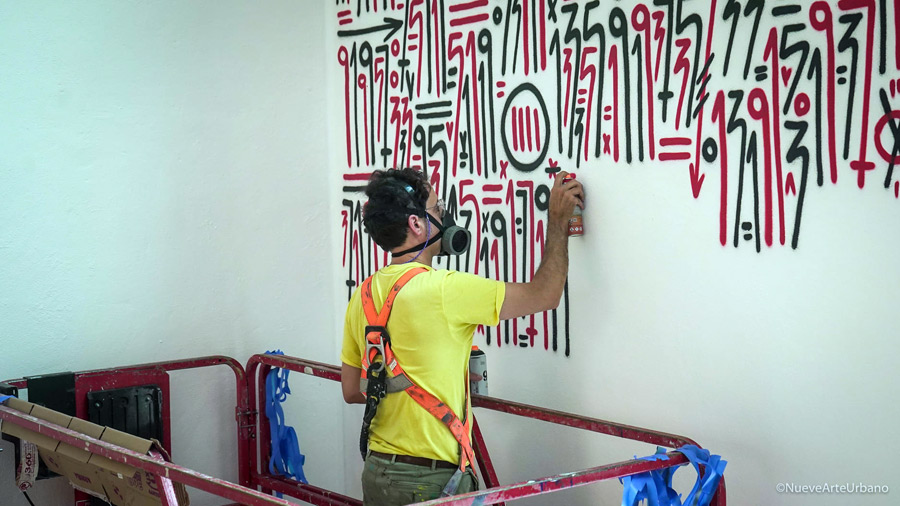
“Inside the venue, directly to the left, we see the introductory text to the project, calligraphed by the hand of the Mexican artist Jassiel Rivera and written by the two curators. Above the text, in the large circular niche, there is a joint work by four artists. It is a large X that represents Mexpania and defines the four elements of the whole being.”
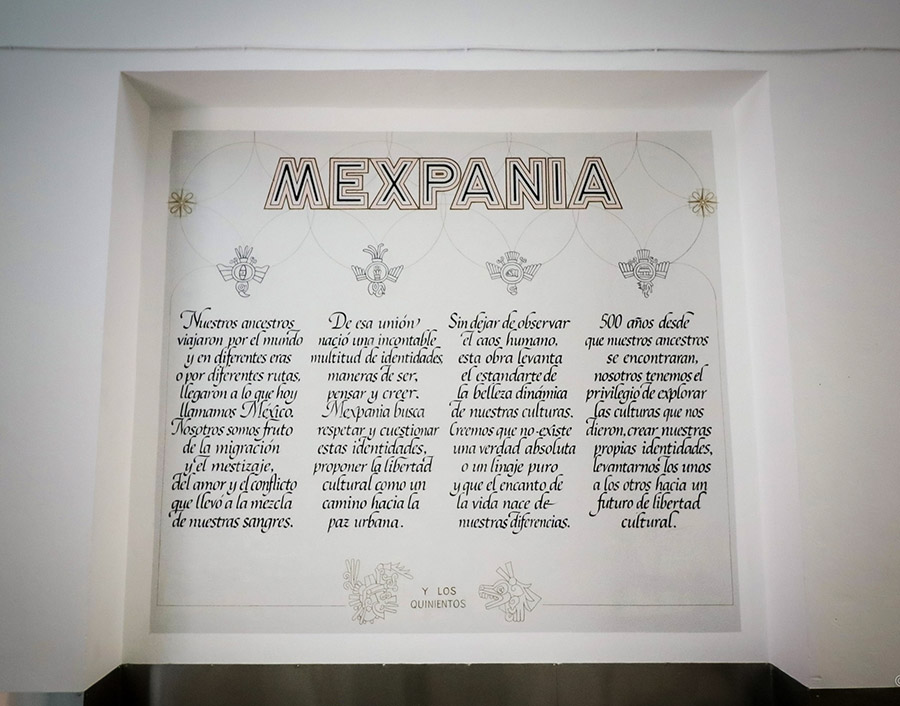
“Our ancestors traveled the world and in different eras or by different routes, they arrived in what we now call Mexico. … Mexpania seeks to respect and question these identities, to propose cultural freedom as a path to urban peace. While observing human chaos, this work raises the banner of the dynamic beauty of our cultures. We believe that there is no absolute truth or a pure lineage and that the charm of life is born of our differences. 500 years after the first Spanish migration to ancient Mexico, we are privileged to explore the cultures that bequeathed us, create our own identities, and lift each other up toward a future of cultural freedom.” – Édgar Sánchez and Arcadi Poch. Curators.
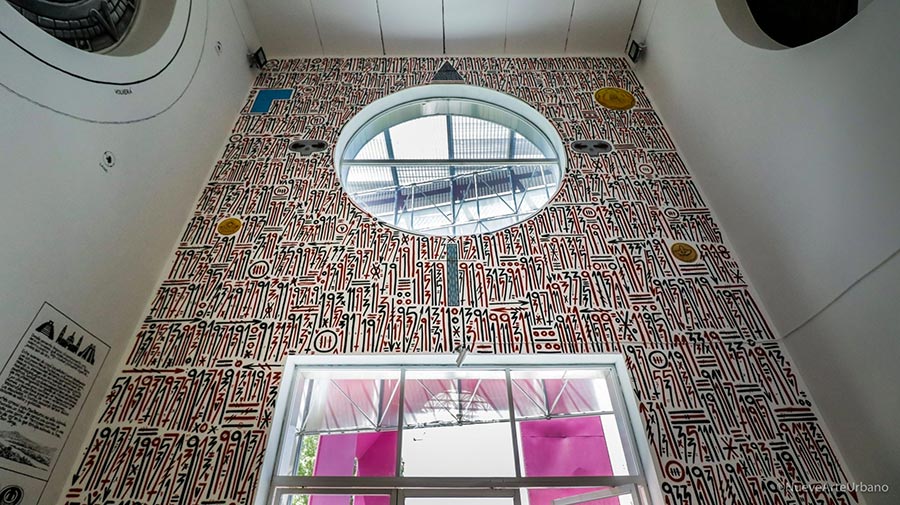
SIXE
“Sixe, an artist of Catalan origin, occupies the two walls corresponding to the main entrances, the entrance, and the exit, with a numerical representation that occupies the entire surface. The enormous network in black and red is a symbolic and abstract representation of the data and events, loves and hates, pains, and hopes that emerged as a result of the great encounter between the multiple cultures of both continents. It is a contemporary codex, an abstract framework, in which the symbols of death are represented by skulls, the cross of the Catholic religion imposed by the Spanish, and other symbols that represent the balance of the cosmos, the new sun, and the eclipse of the civilization of ancient Mexico. We can also observe the gold coins that Daniel Muñoz incorporates in Sixe’s work, generating a dialogue between these two works.”
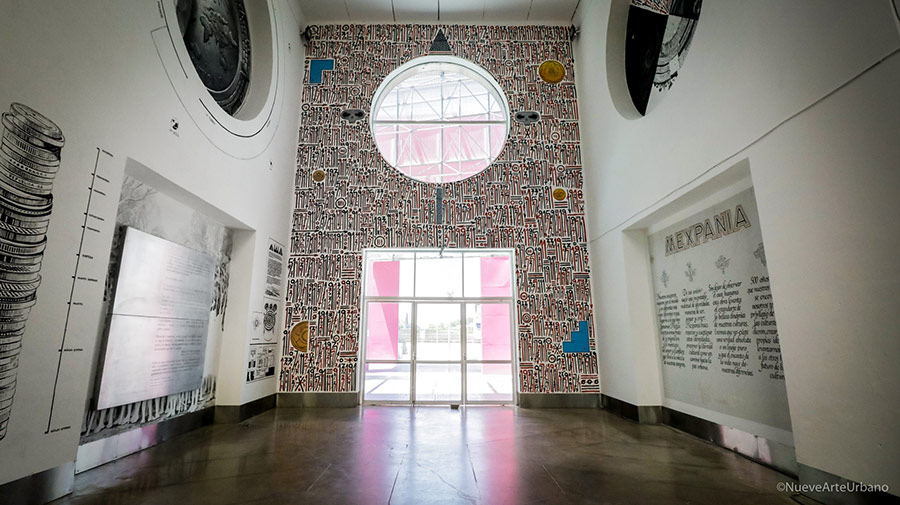
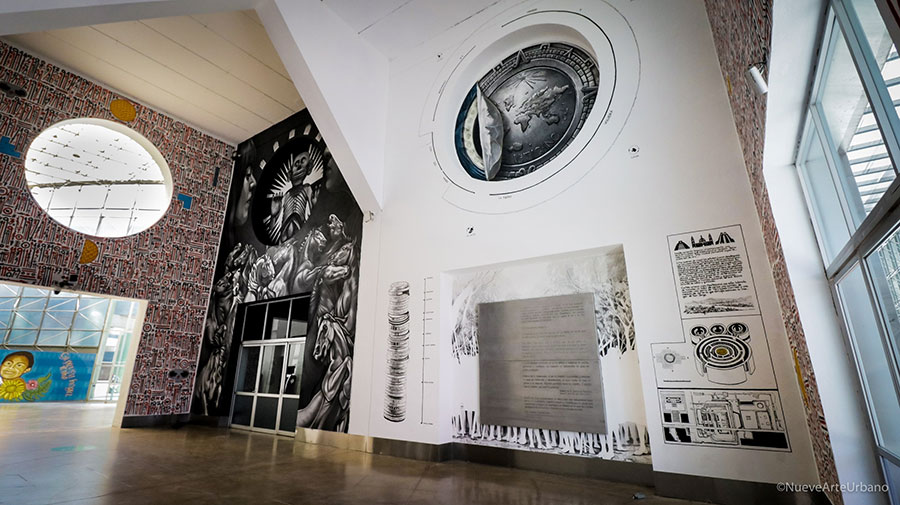
Daniel Muñoz
“On the front side and on the right we find the wall by Daniel Muñoz, a conceptual work with a great load of social reflection and critical thinking. Daniel talks about the power of money around domination and how it is able to make our cultures invisible. The large coin that presides over his work seems to cover the American continent and around the great circle, there are representations of the globe seen from different perspectives, creating a cartography of money. Behind the plaque that commemorates the inauguration of this space, and that contains an extract from the Florentine Codex, we observe a group of invisible indigenous women. Using these and other symbols, Daniel creates a representation of money as a motivation towards domination, but reinterprets its value with the phrase he writes around the central coin of the mural: ‘The Earth Will Return to Those Who Work It With Their Hands.’ “
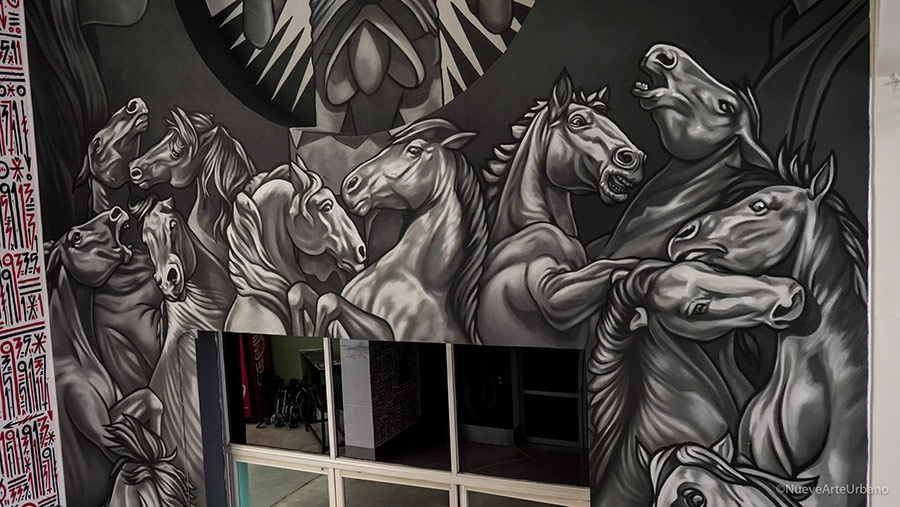
Paola Delfin
“Directly in front of the work of Fusca, appears, in black and white, the work of Paola Delfin. Mictlantecuhtli, the lord of the underworld, presides, radiant over a chaotic swarm of horses, and from them emerge, on the flanks, two mestizo identities. This deity representing death reigned over the underworld through which the dead traveled. It should be mentioned that despite the difficulties that lie in the Mictlan, this was not hell but a challenge that had to be faced after passing away if one wanted to reach the palace that is found after overcoming the difficult journey. The symbols embodied in this piece seem to recognize the enormous pains and sorrows of the past as strengthening challenges, which can give us fortitude and inspire us to live with good conscience.”
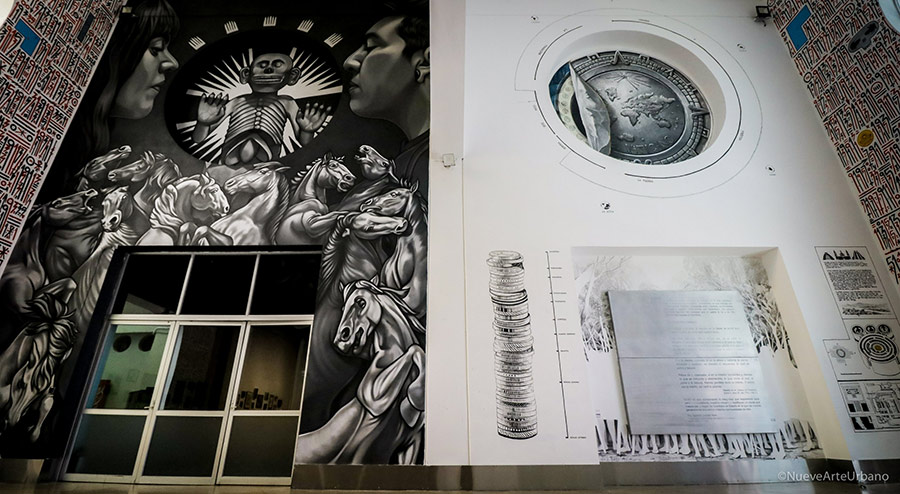
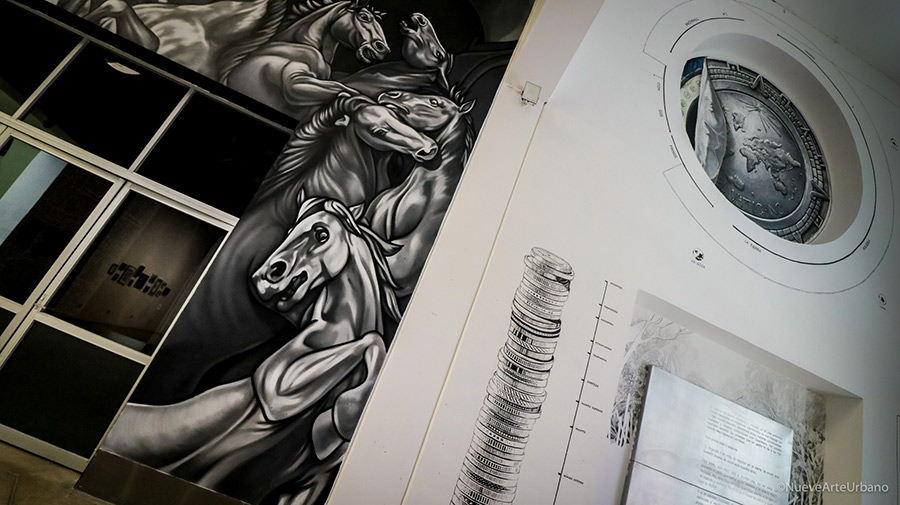
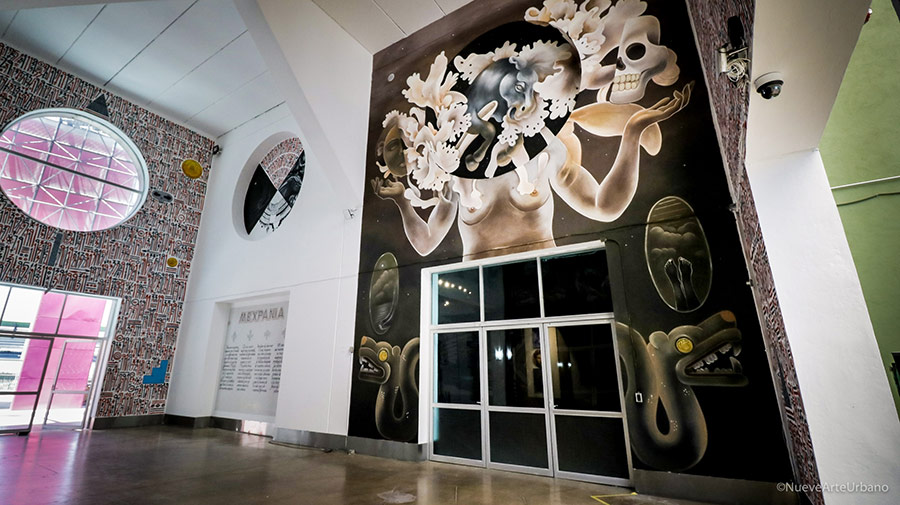
Fusca
On the back wall to the left, Fusca uses timeless symbols to express subtleties behind the way we think. In moonlight-like colors, we see a representation of Coatlicue, the archetypal maternal deity of ancient Mexico, who as the legend tells us, gives birth to Huitzilopochtli, the cultural leader of the Mexica, who we still see on the Mexican national shield, represented by an eagle. This figure, who could be interpreted as the mother of Mexico, is intervened in such a way that an equine head instead of a serpentine one emerges from her neck. In this way, the deity and the horse are united in a single, mestizo figure. The piece expresses the emotion of living the fusion between different identities. These understandings of who we are can weaken or strengthen us. How can we better understand the past that created us to empower and liberate us? To build our own way of describing ourselves, to strengthen life in our future and that of our descendants?
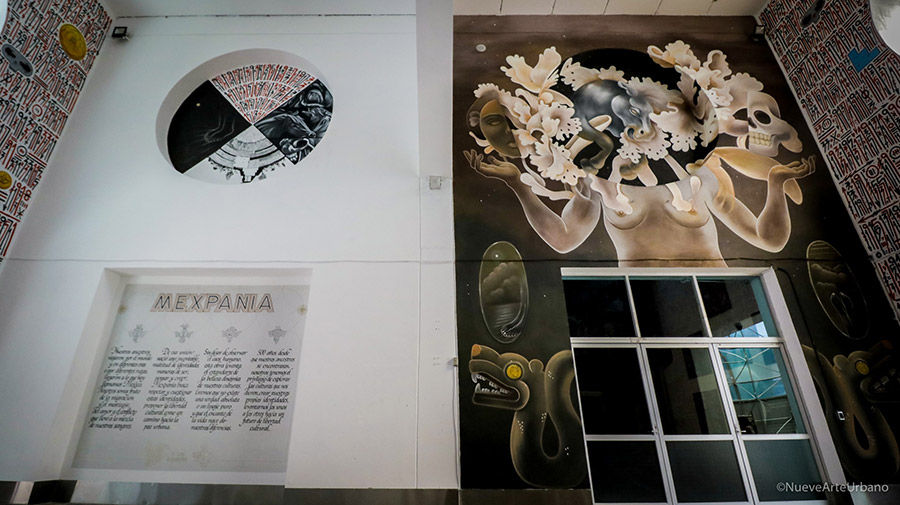
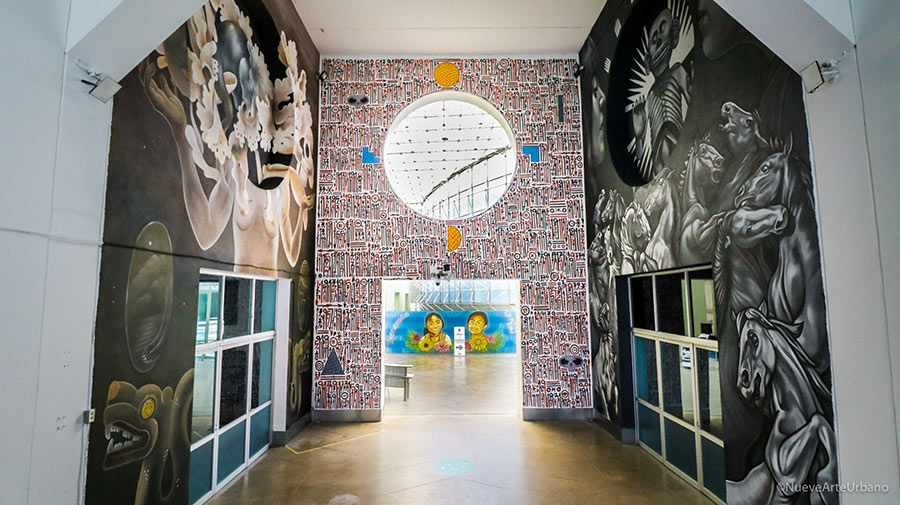
 BROOKLYN STREET ART LOVES YOU MORE EVERY DAY
BROOKLYN STREET ART LOVES YOU MORE EVERY DAY